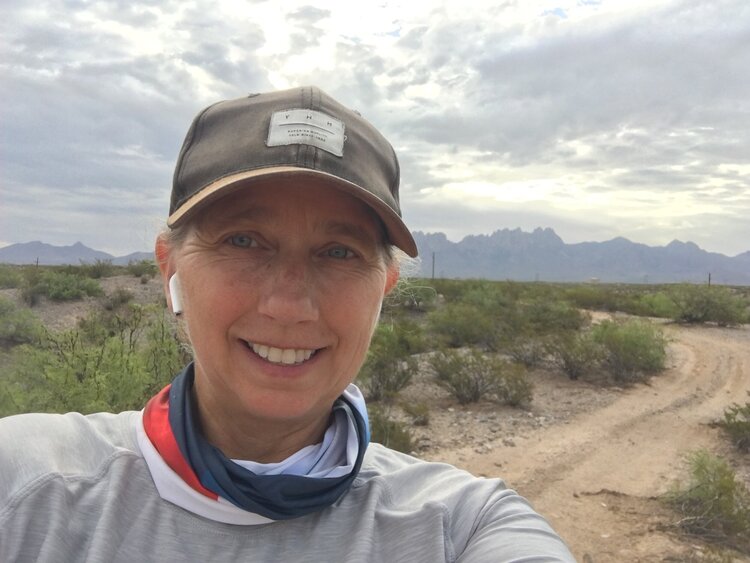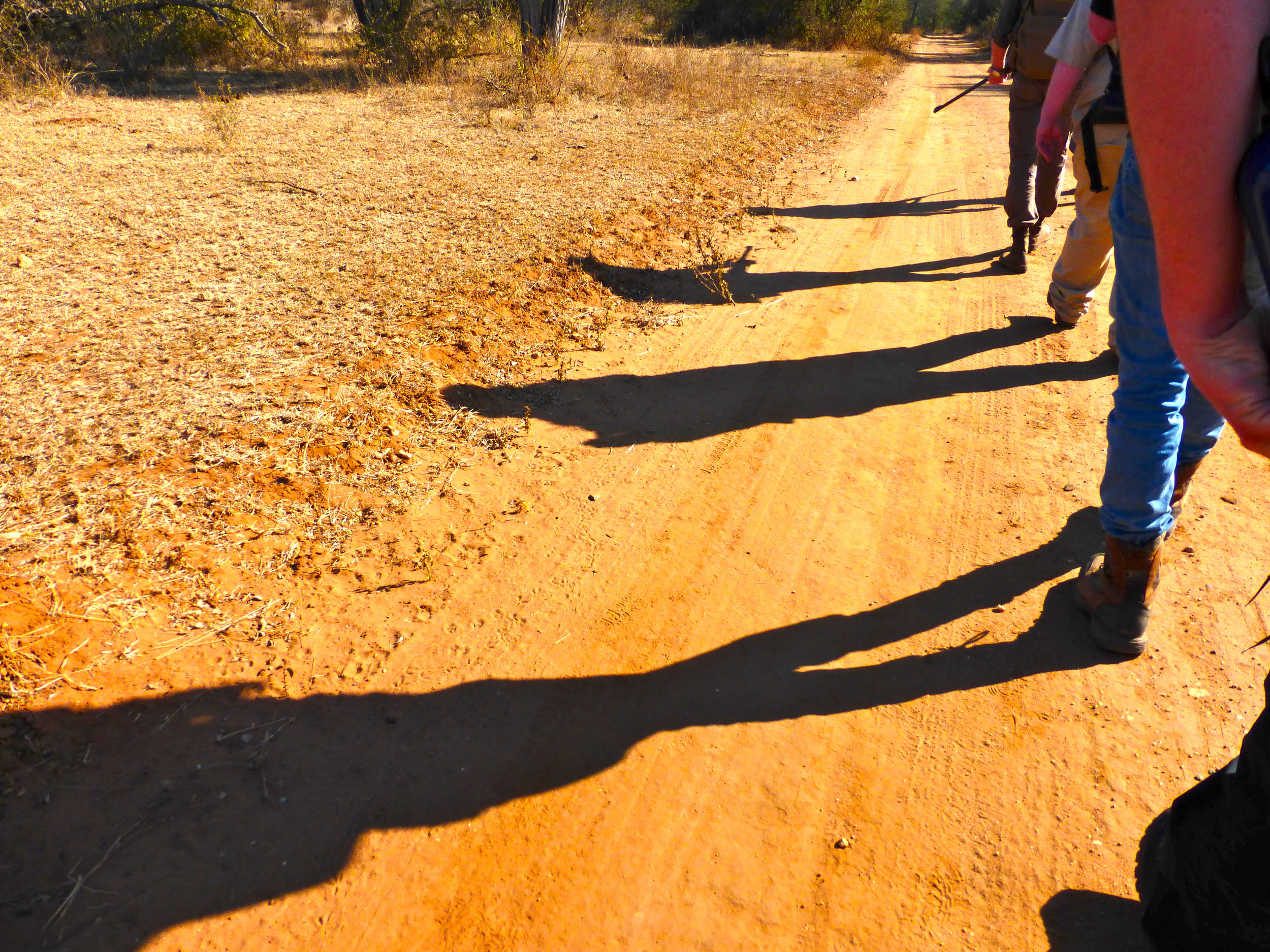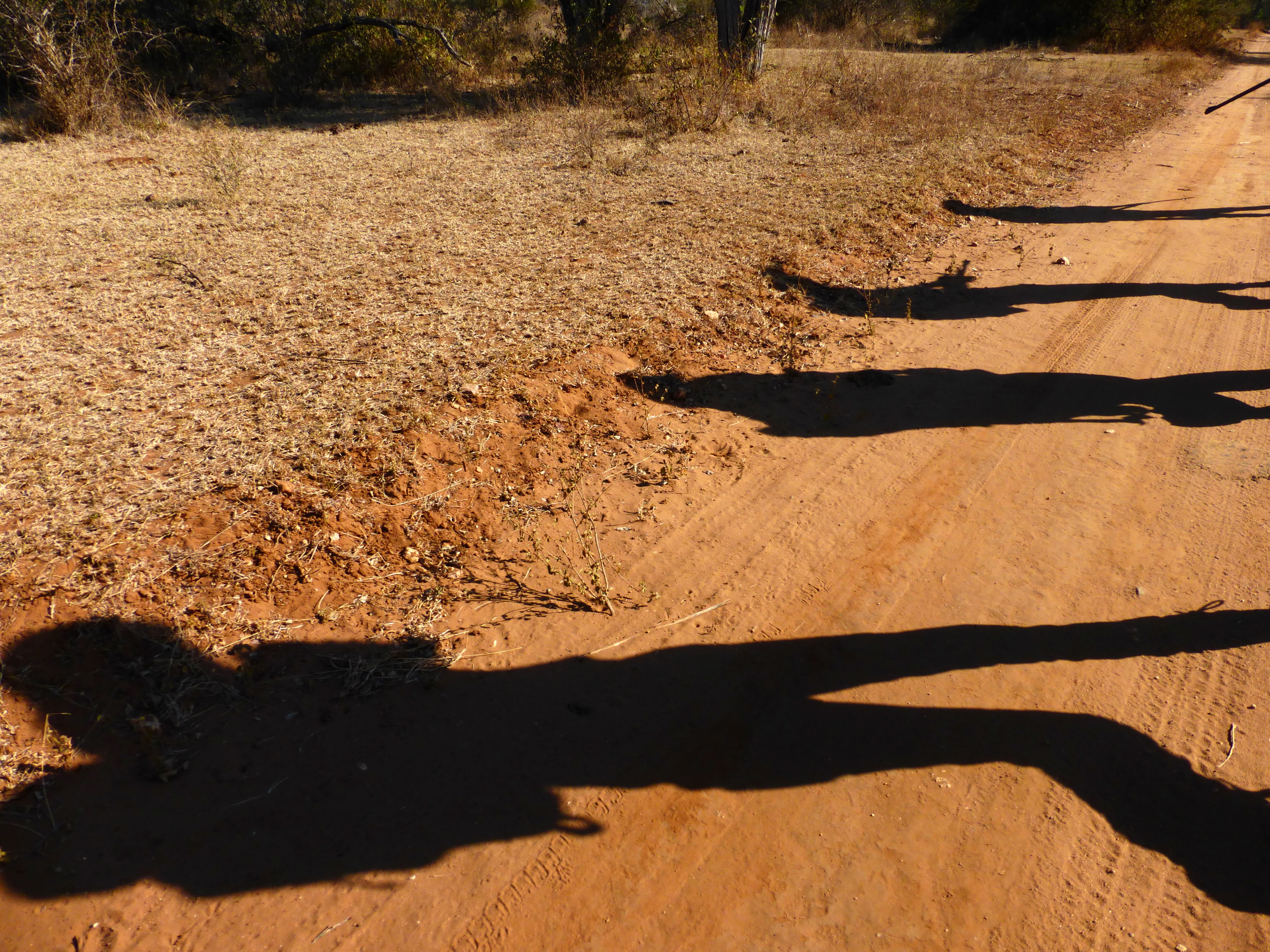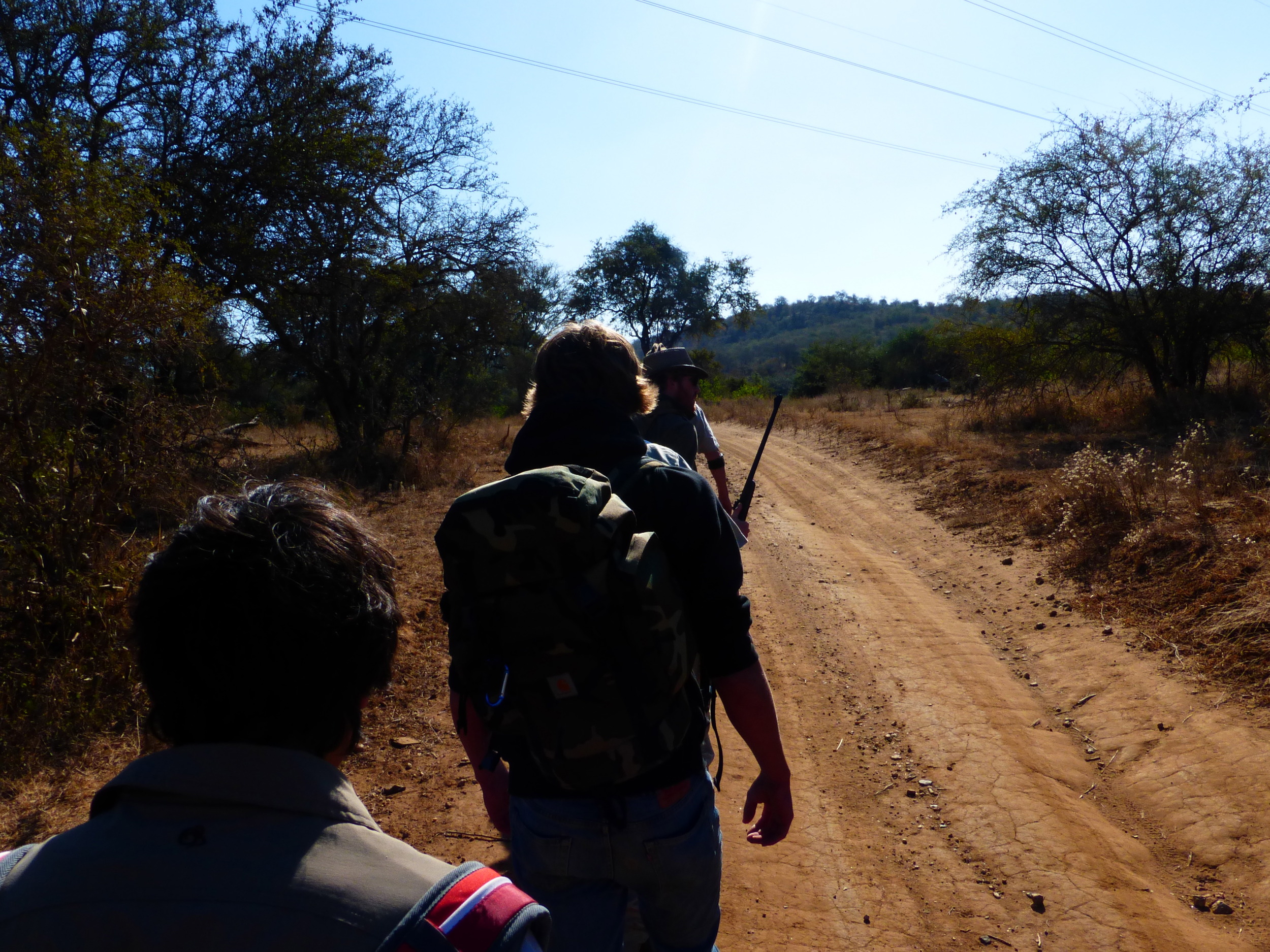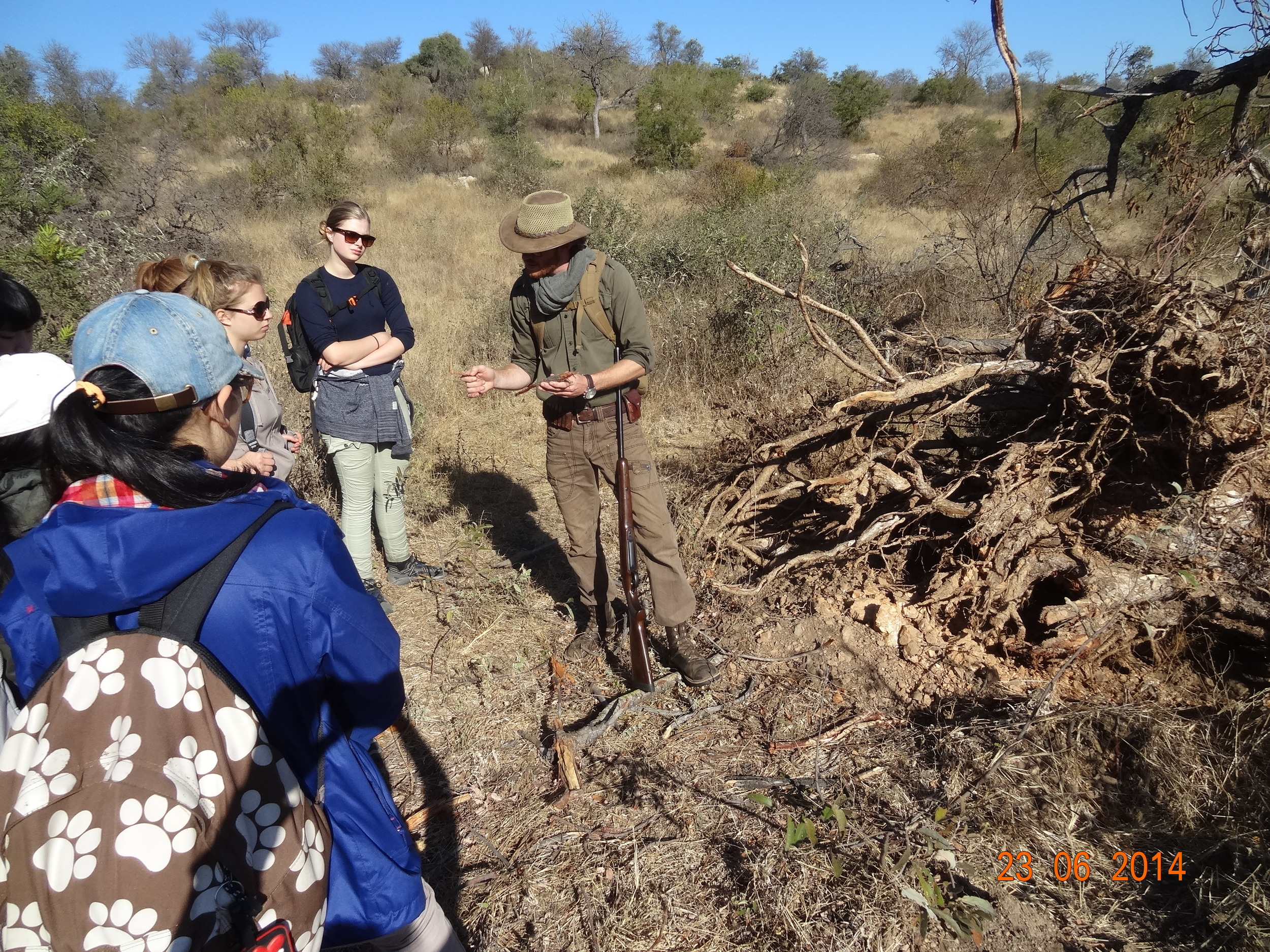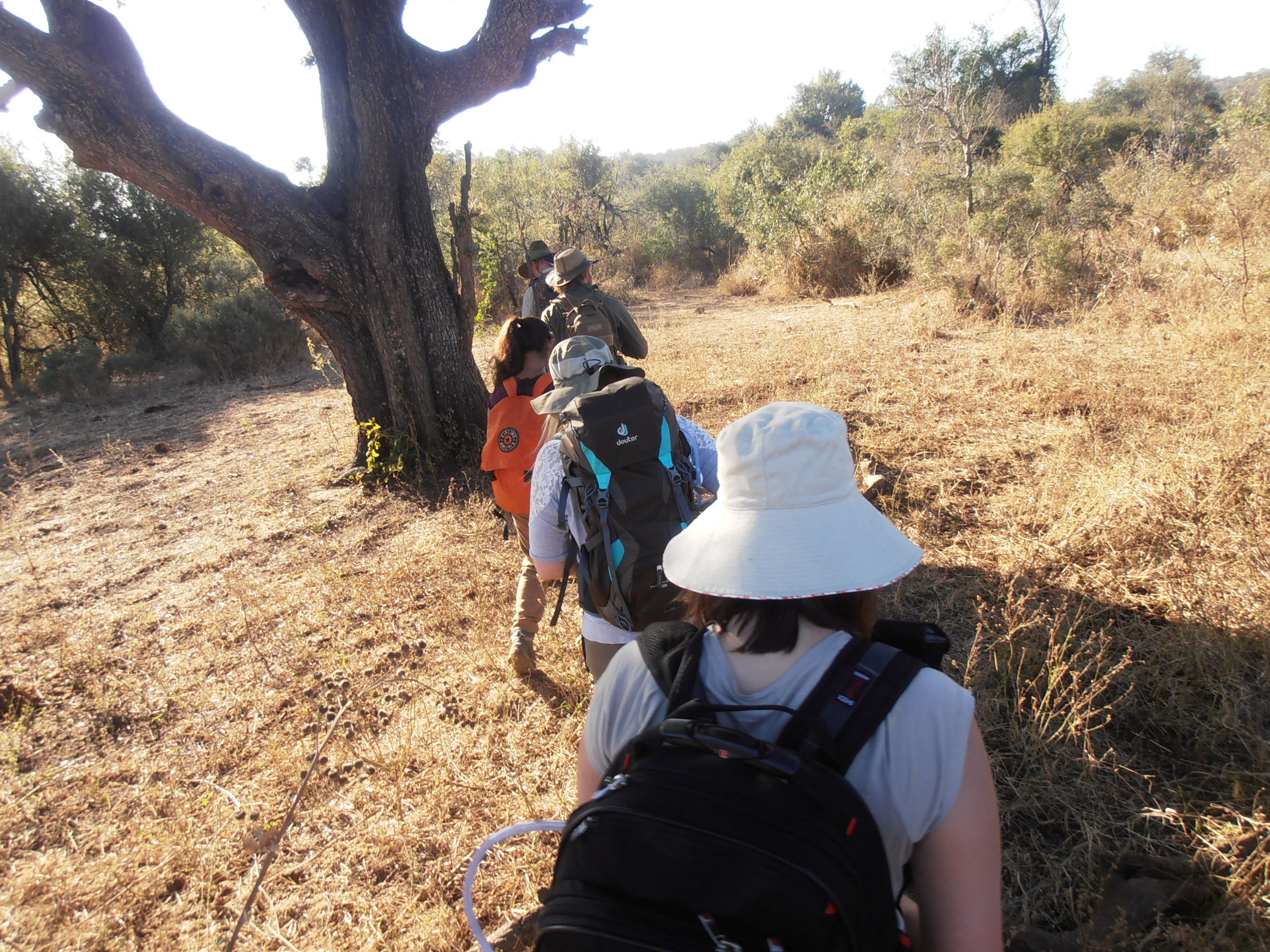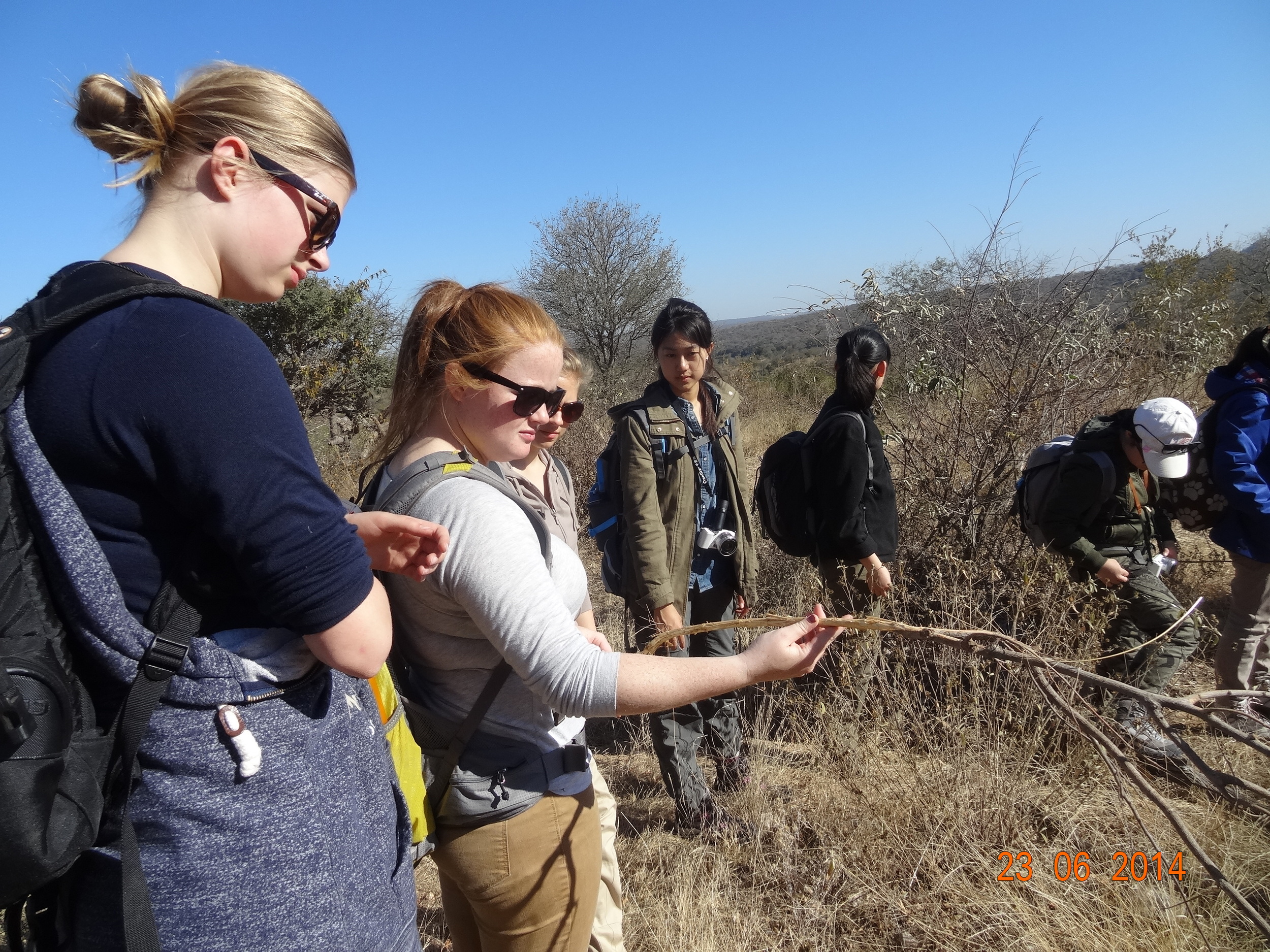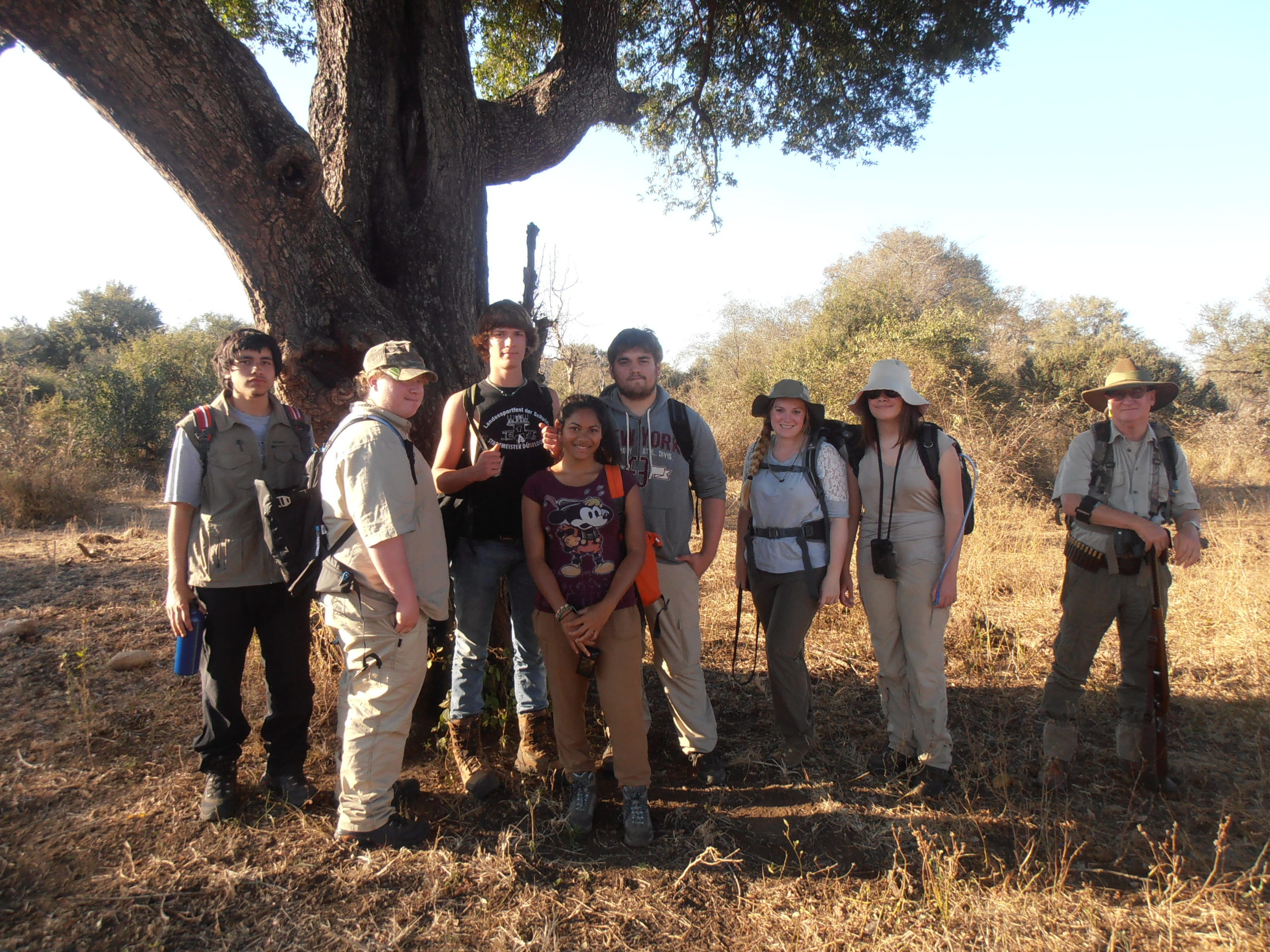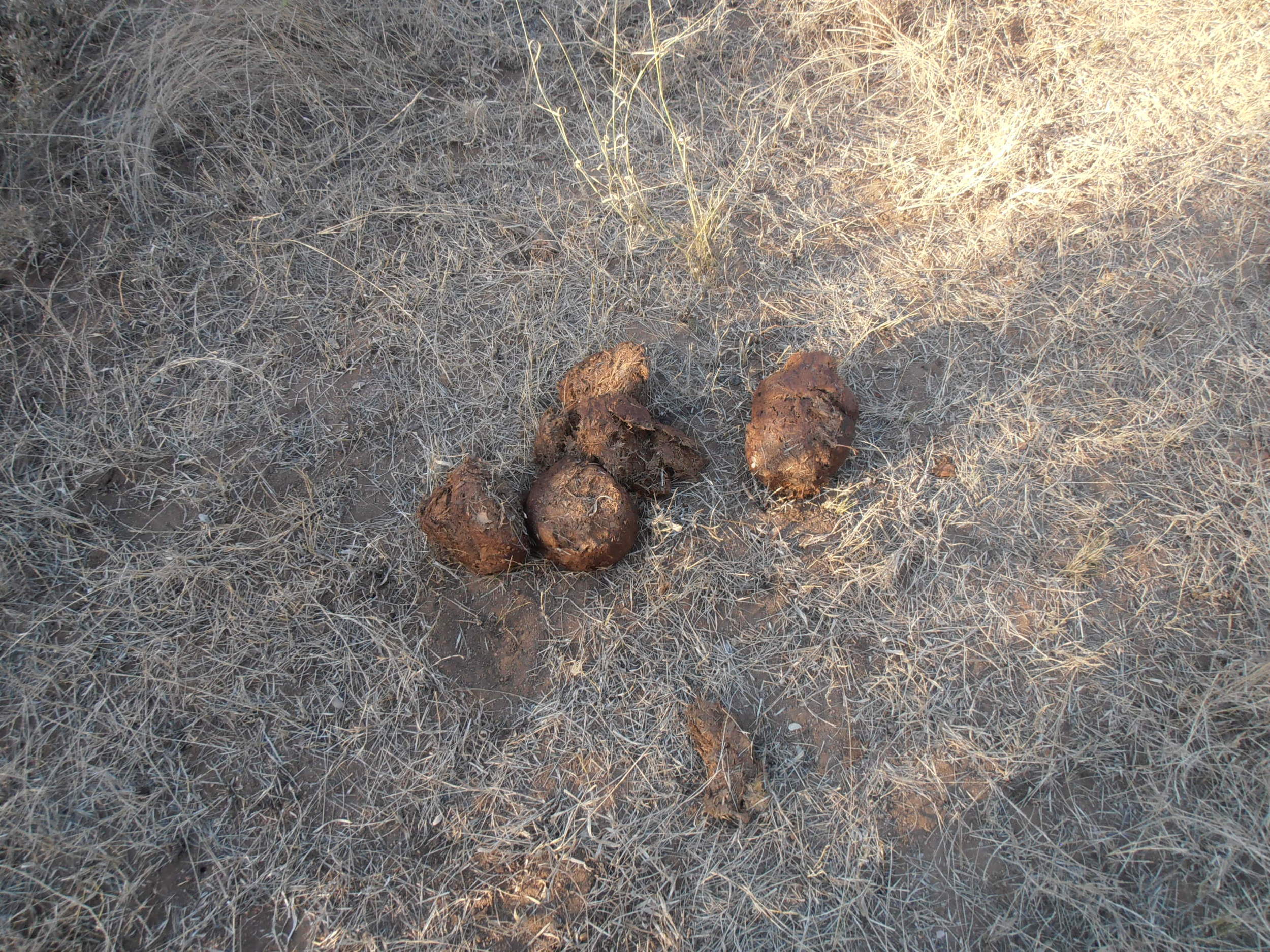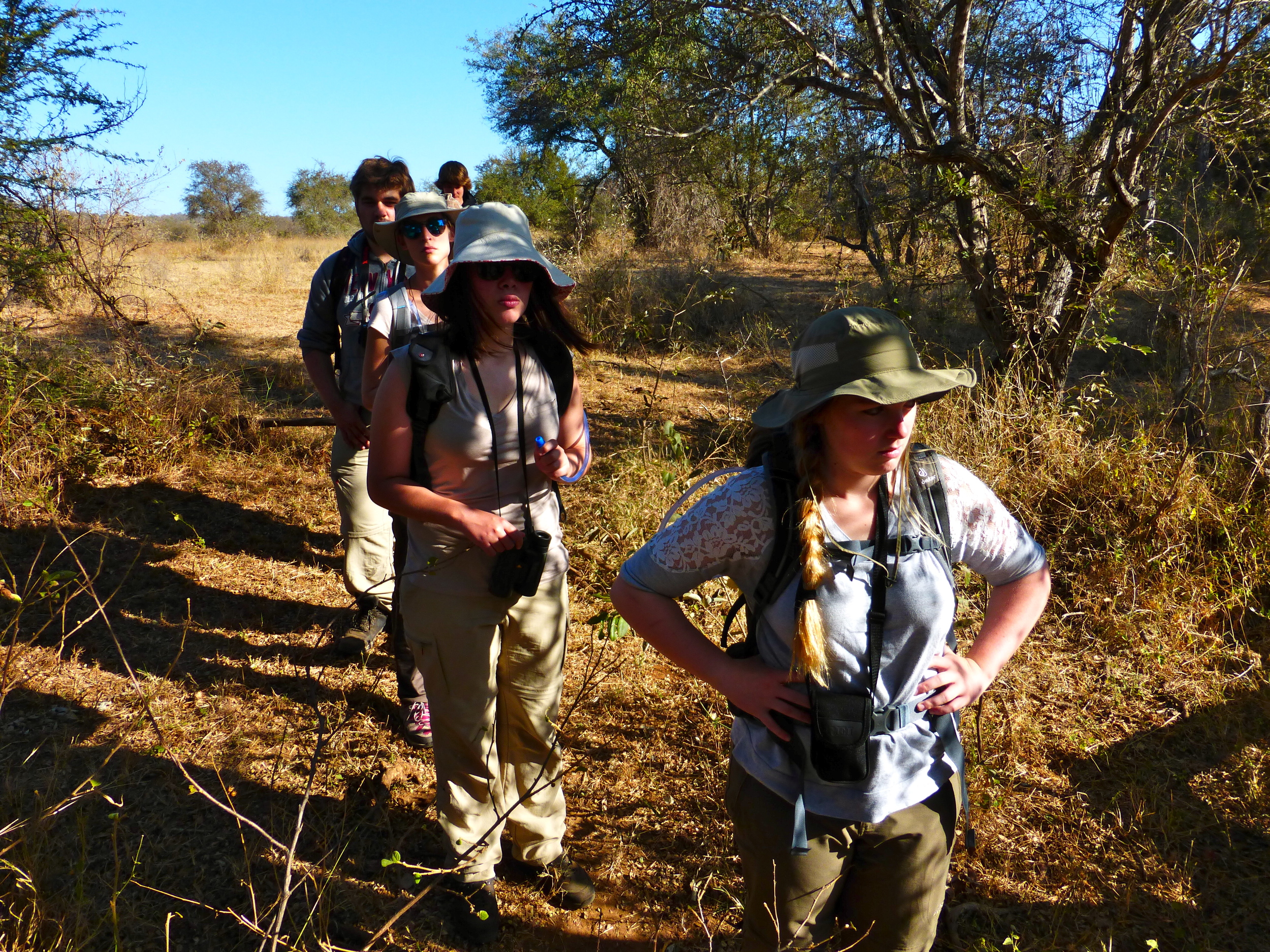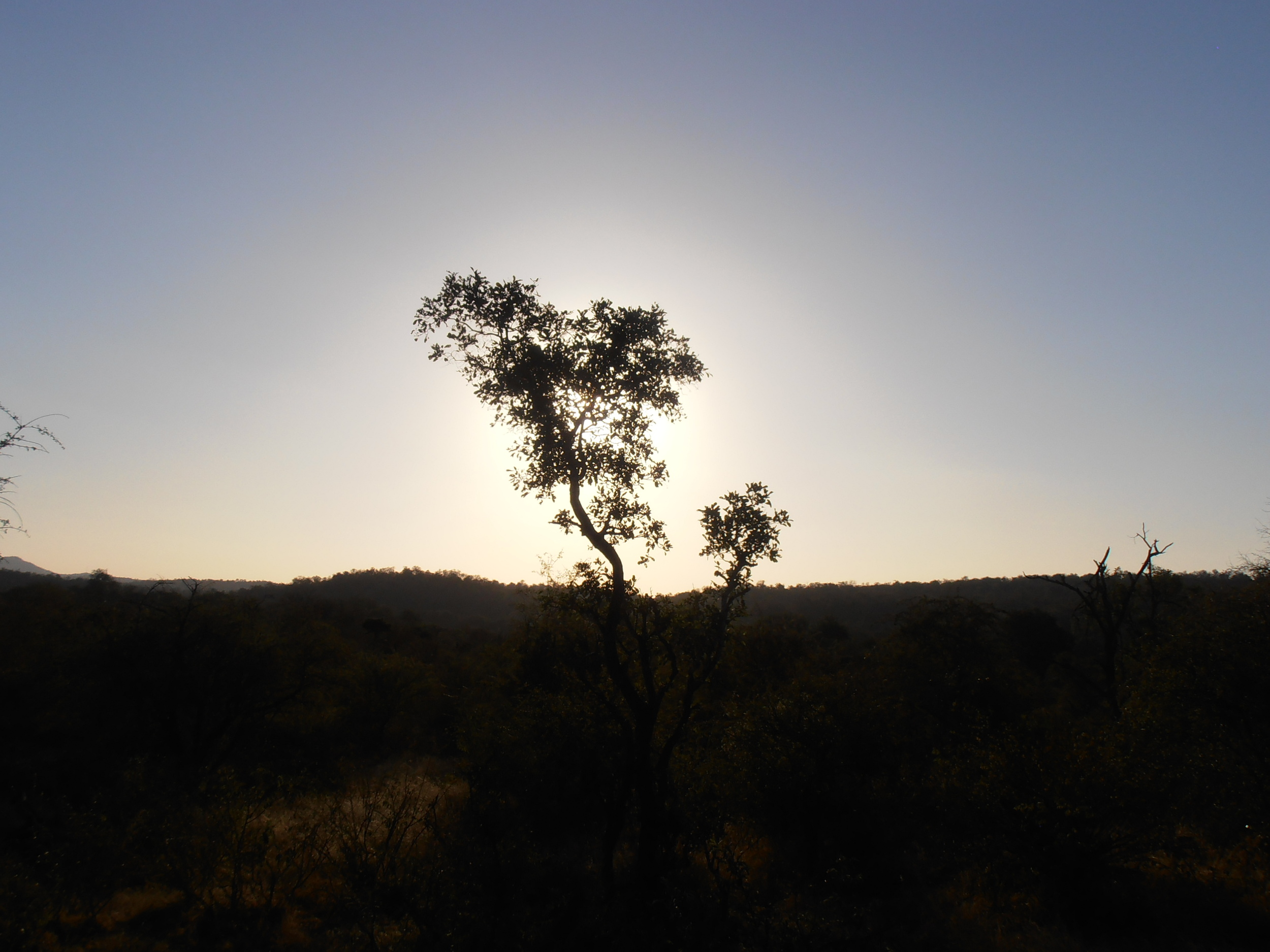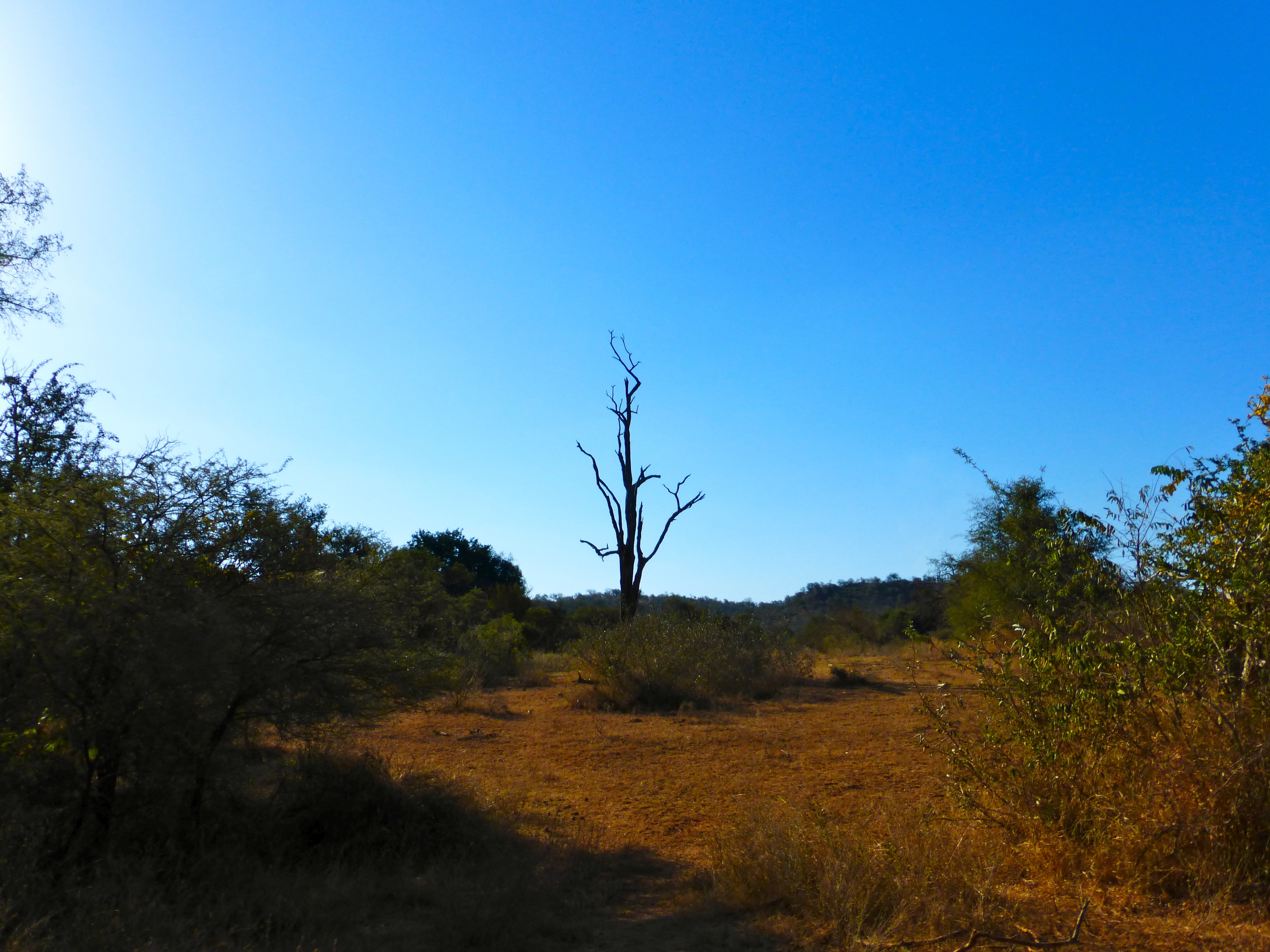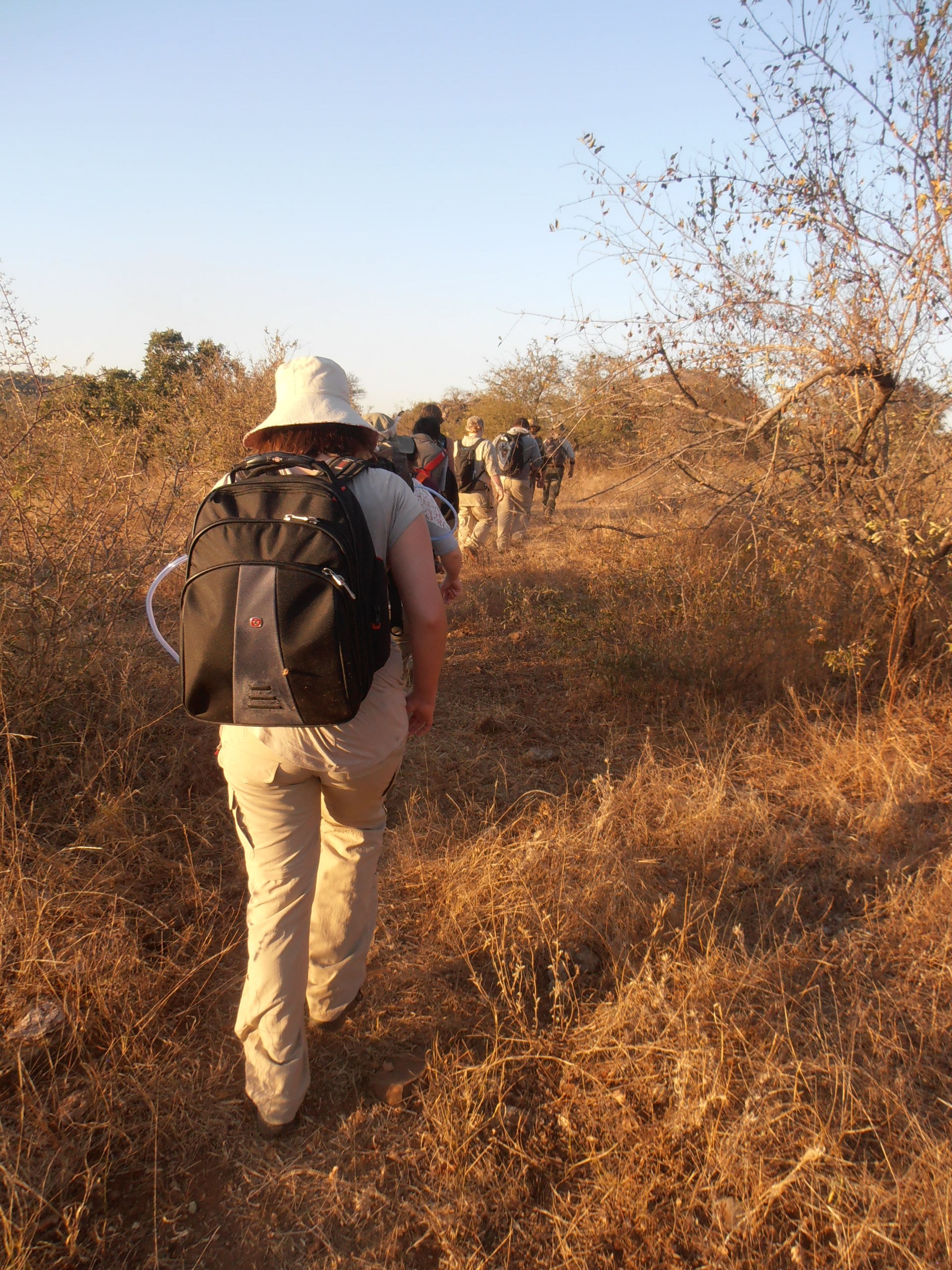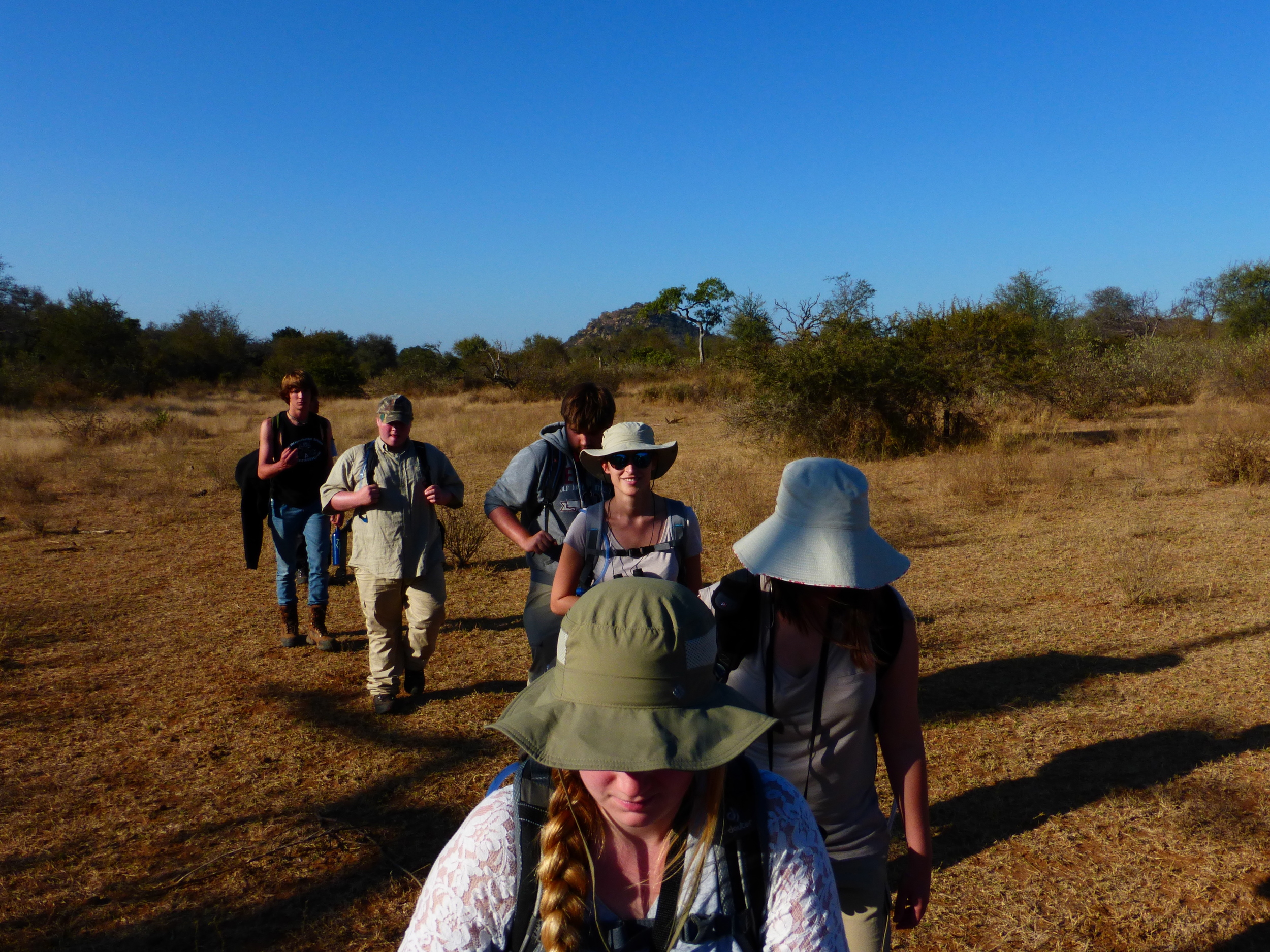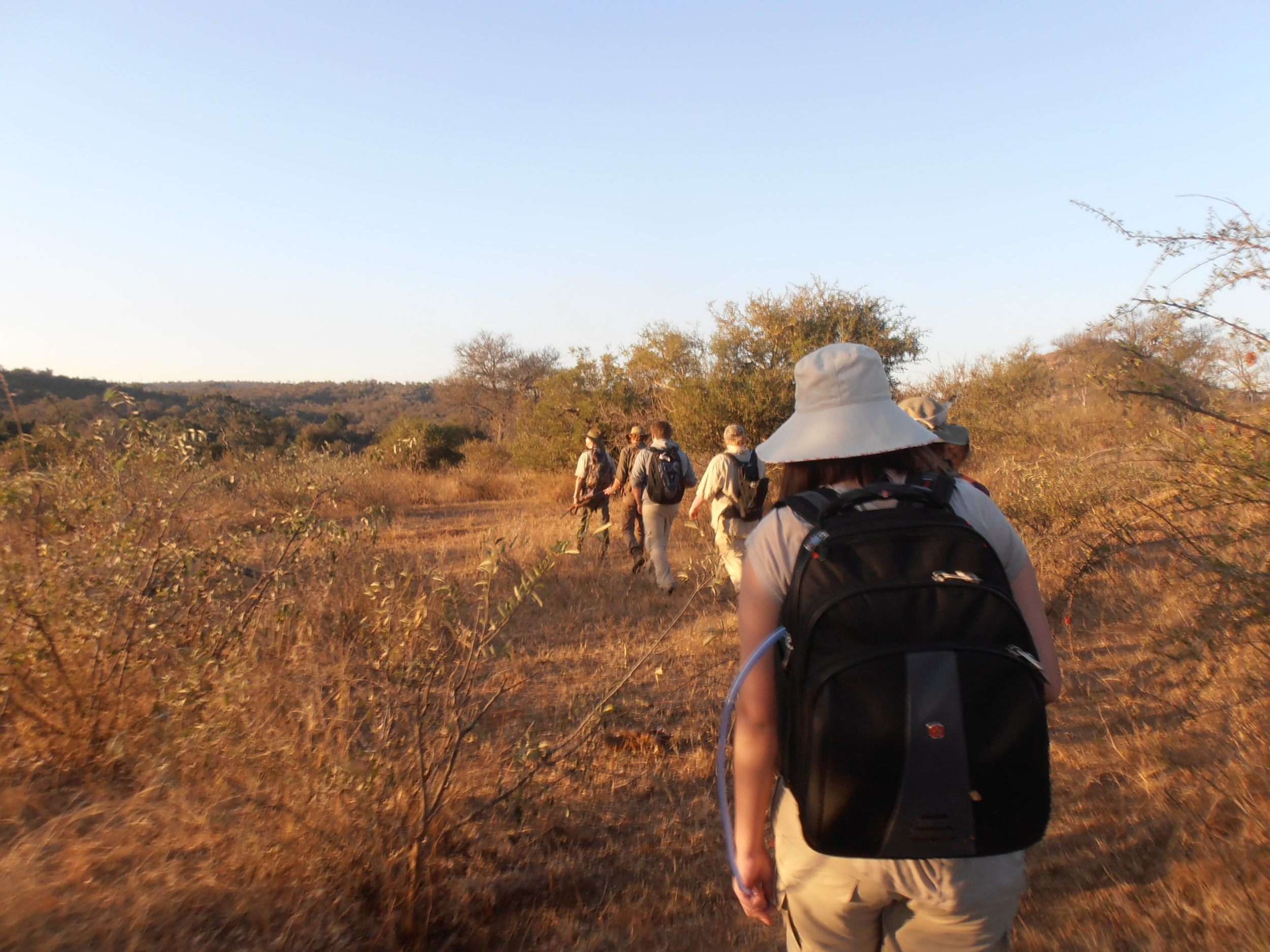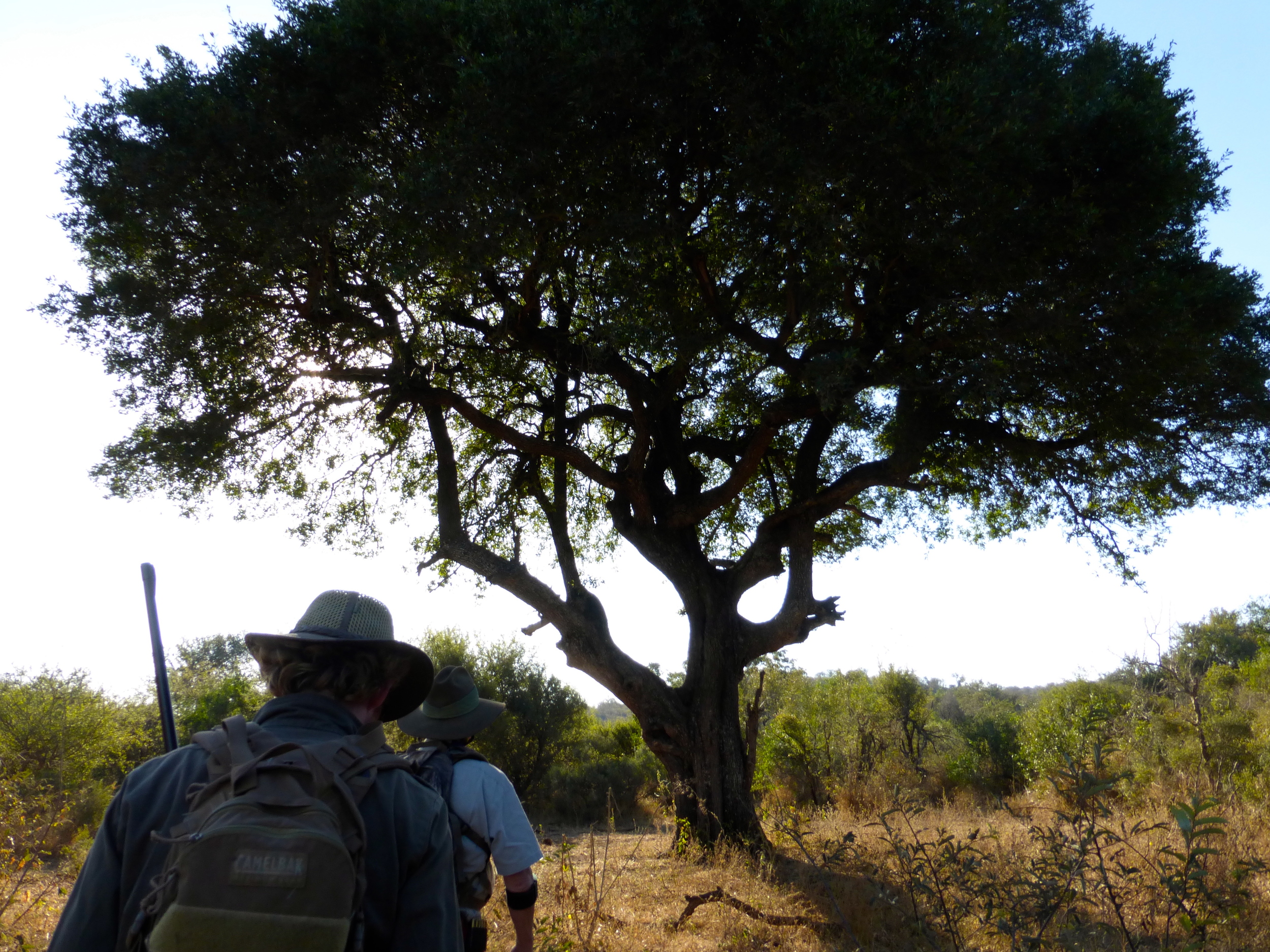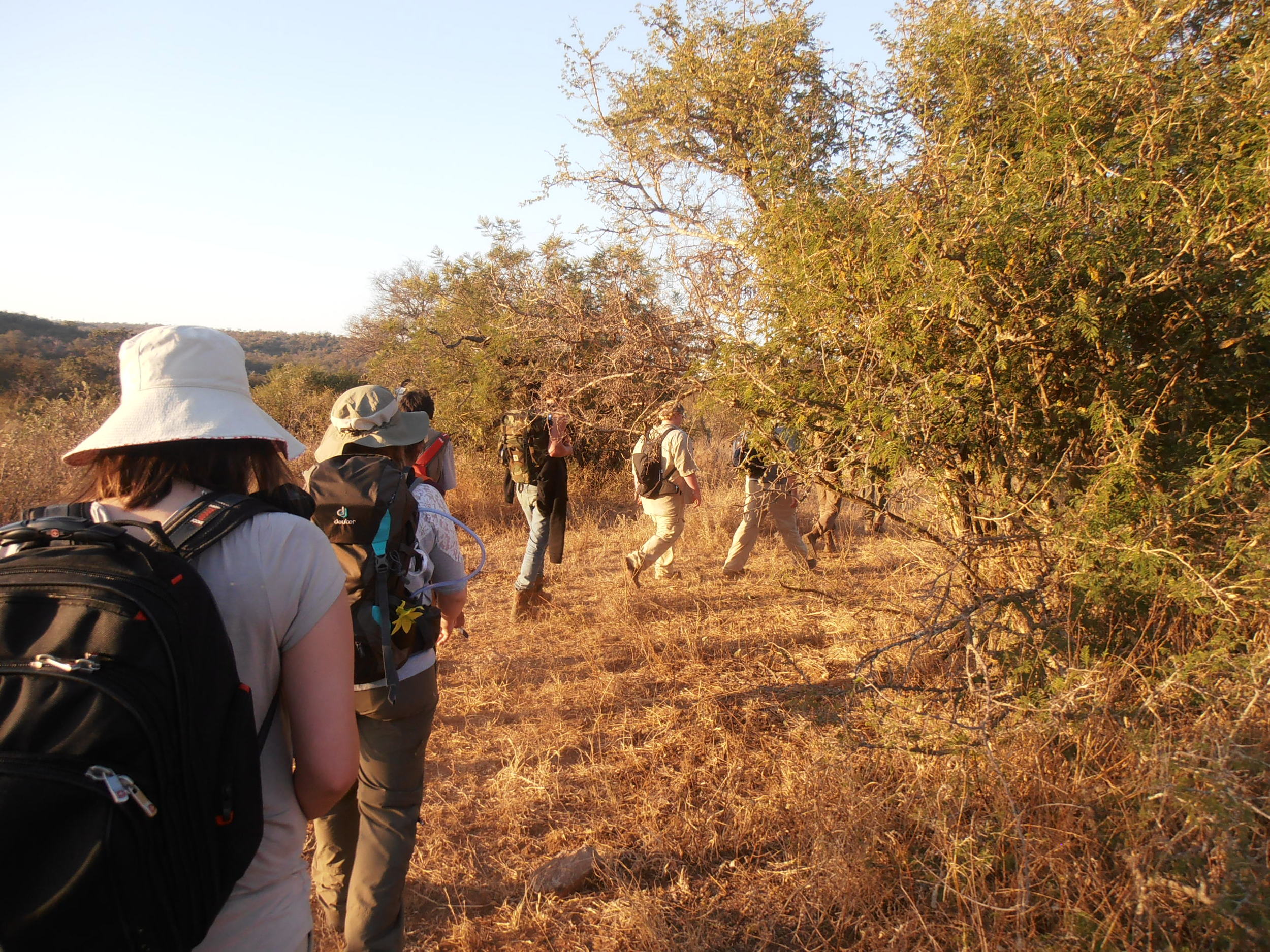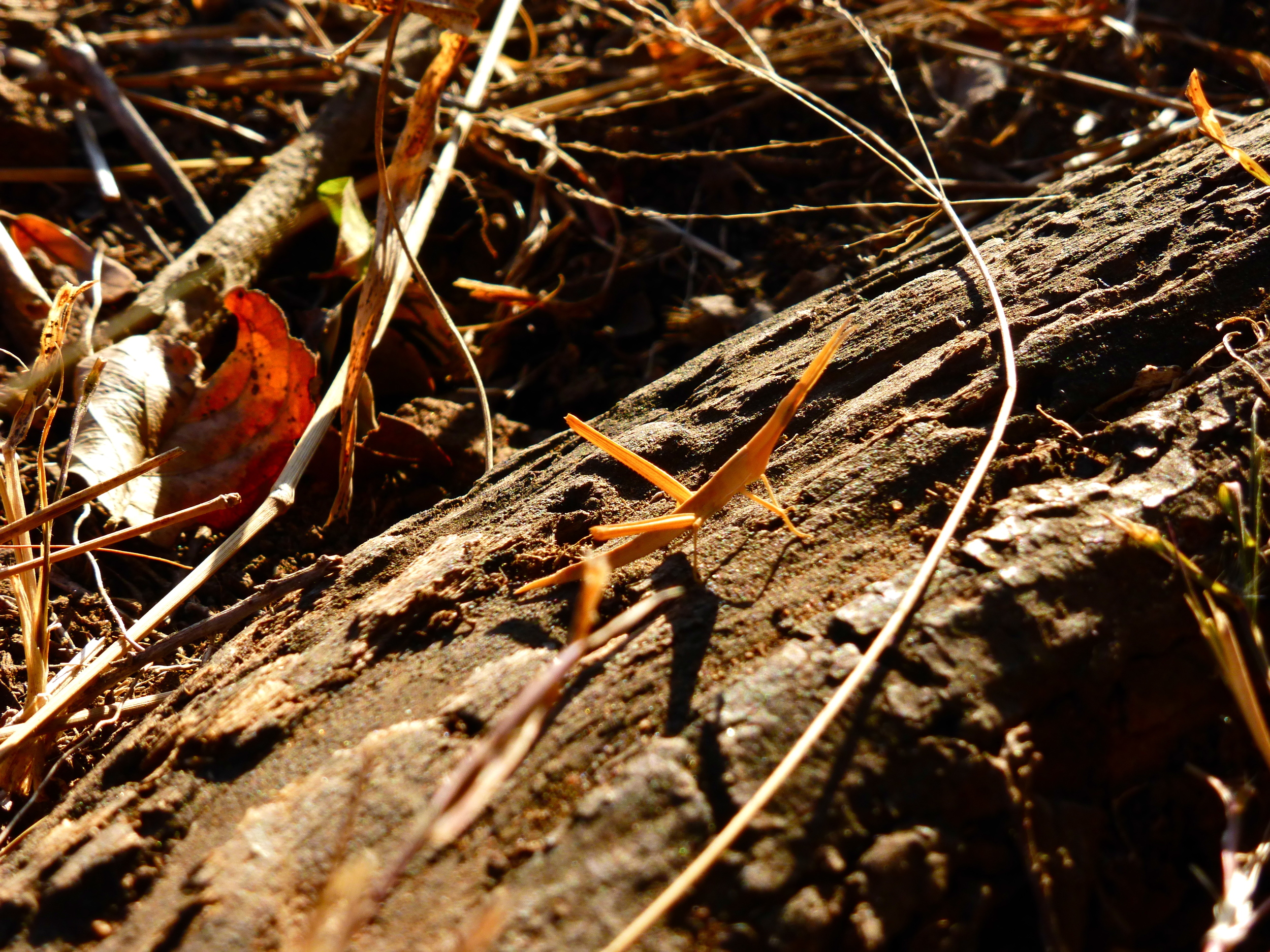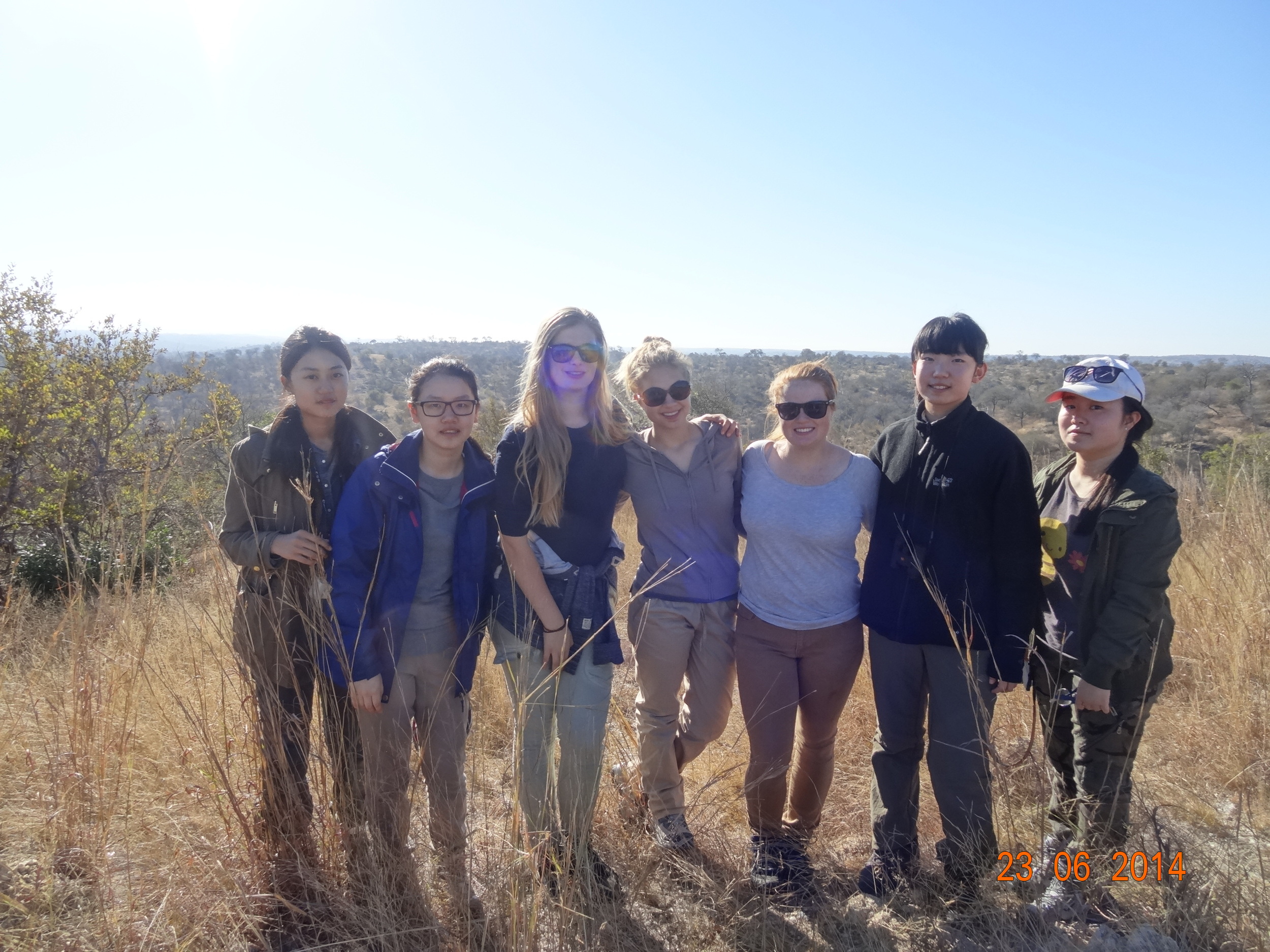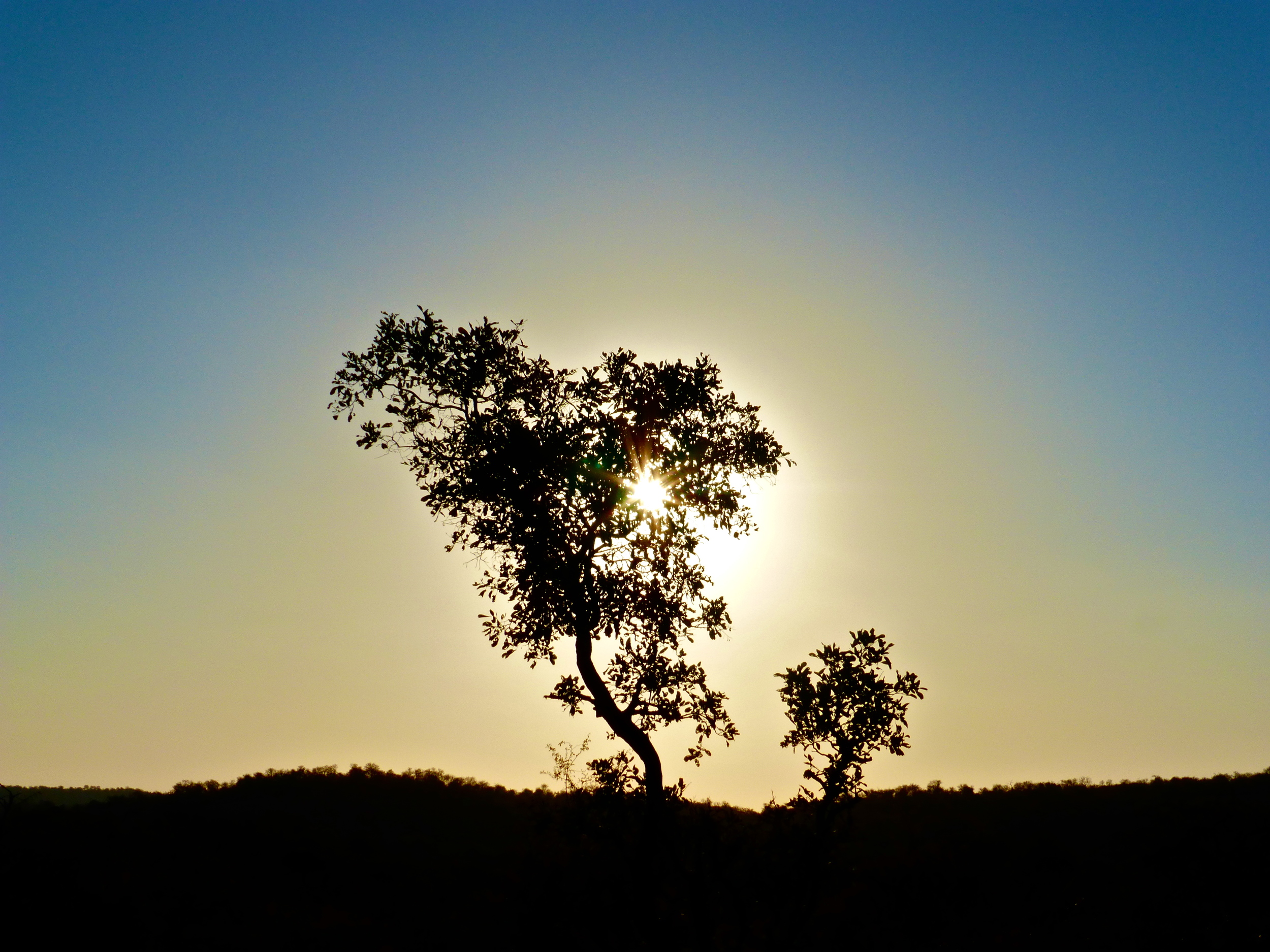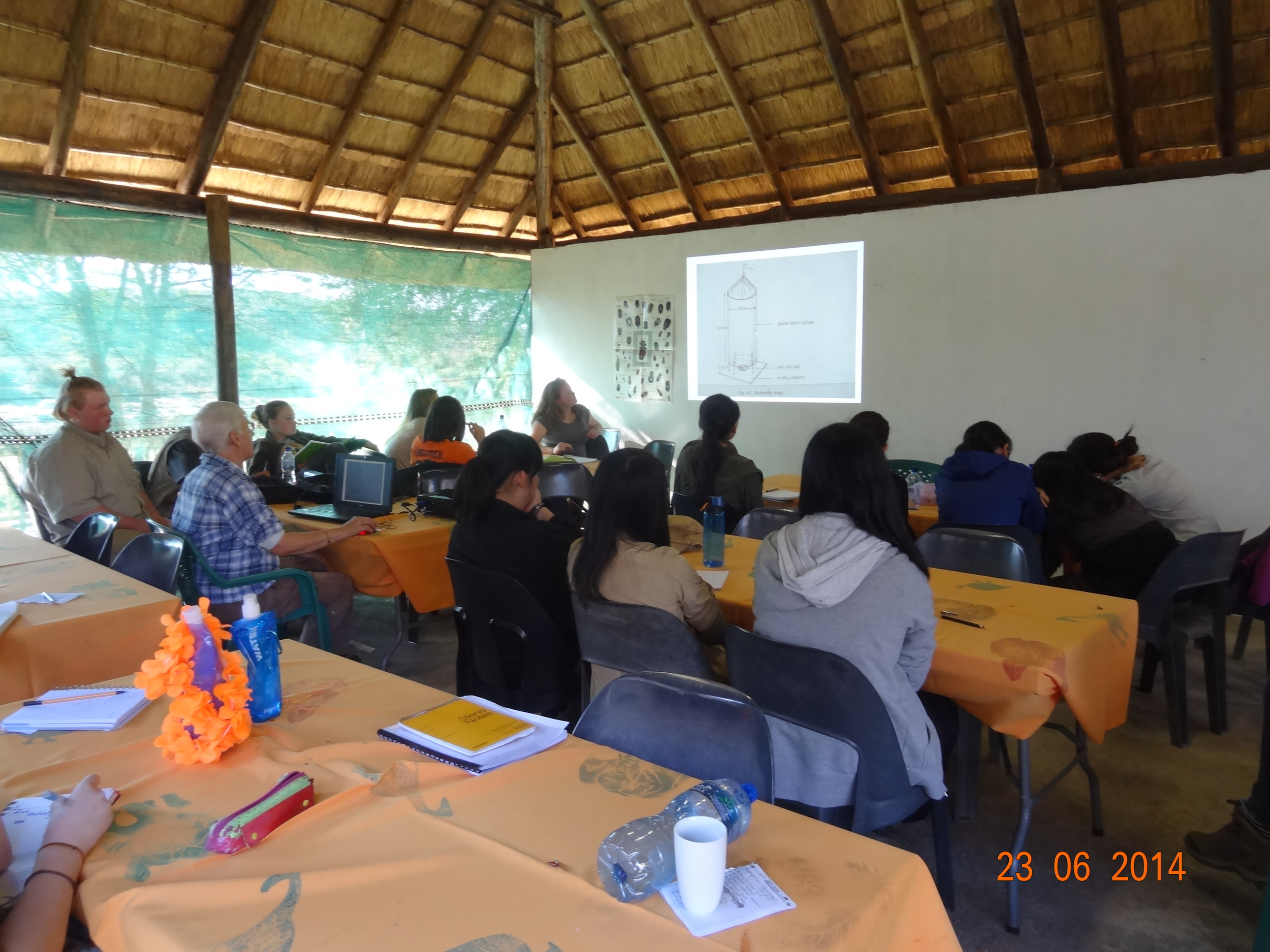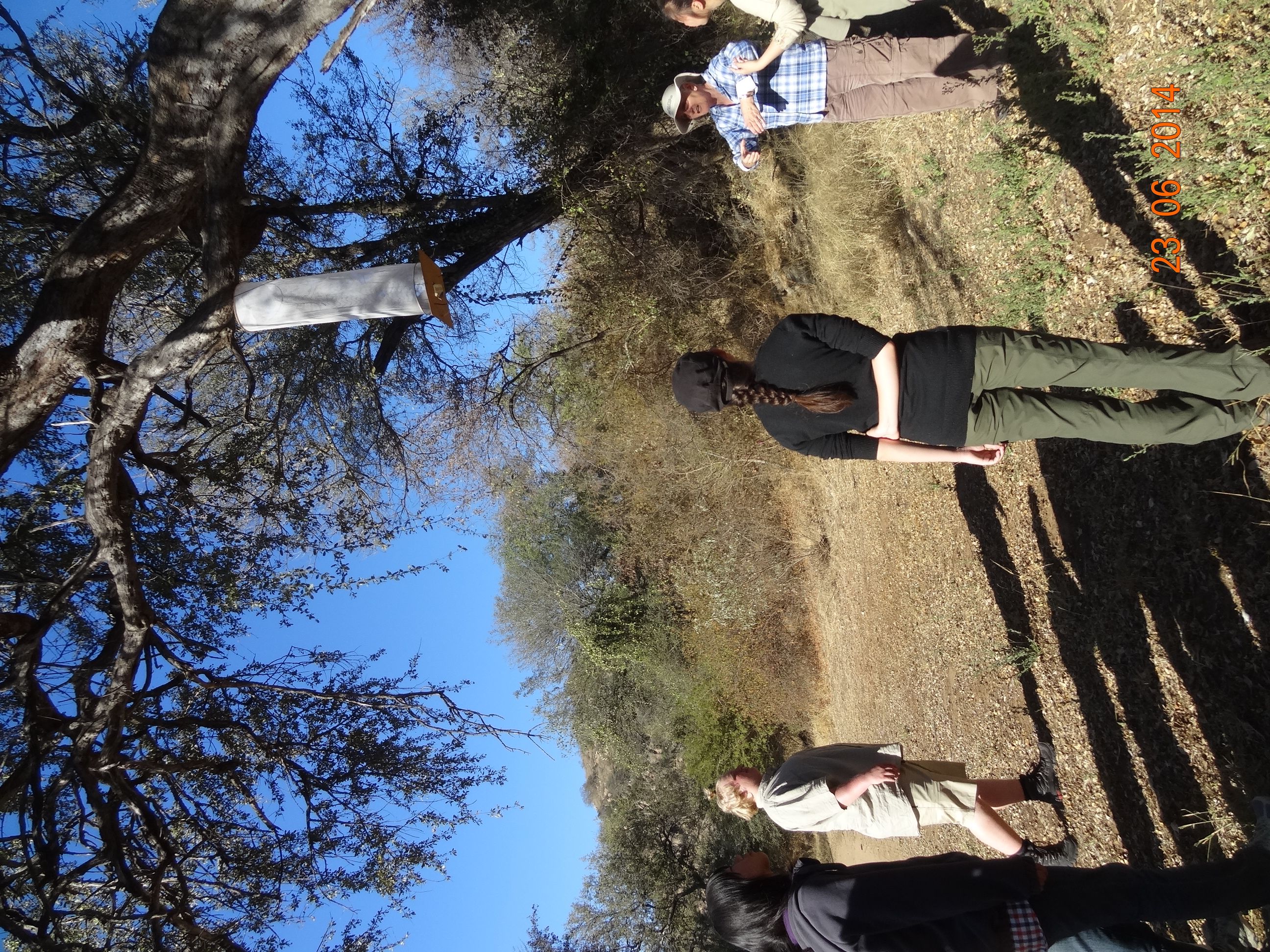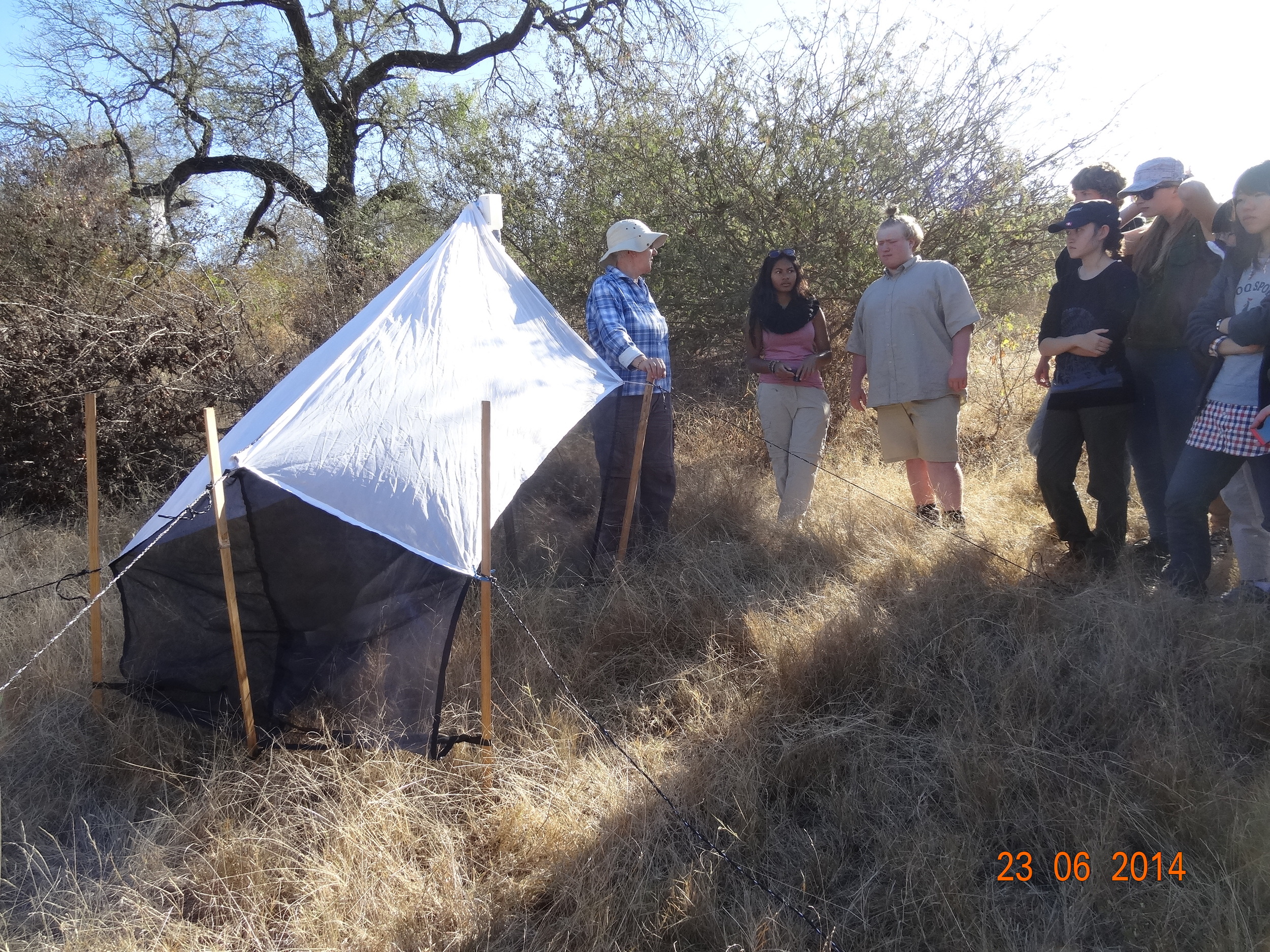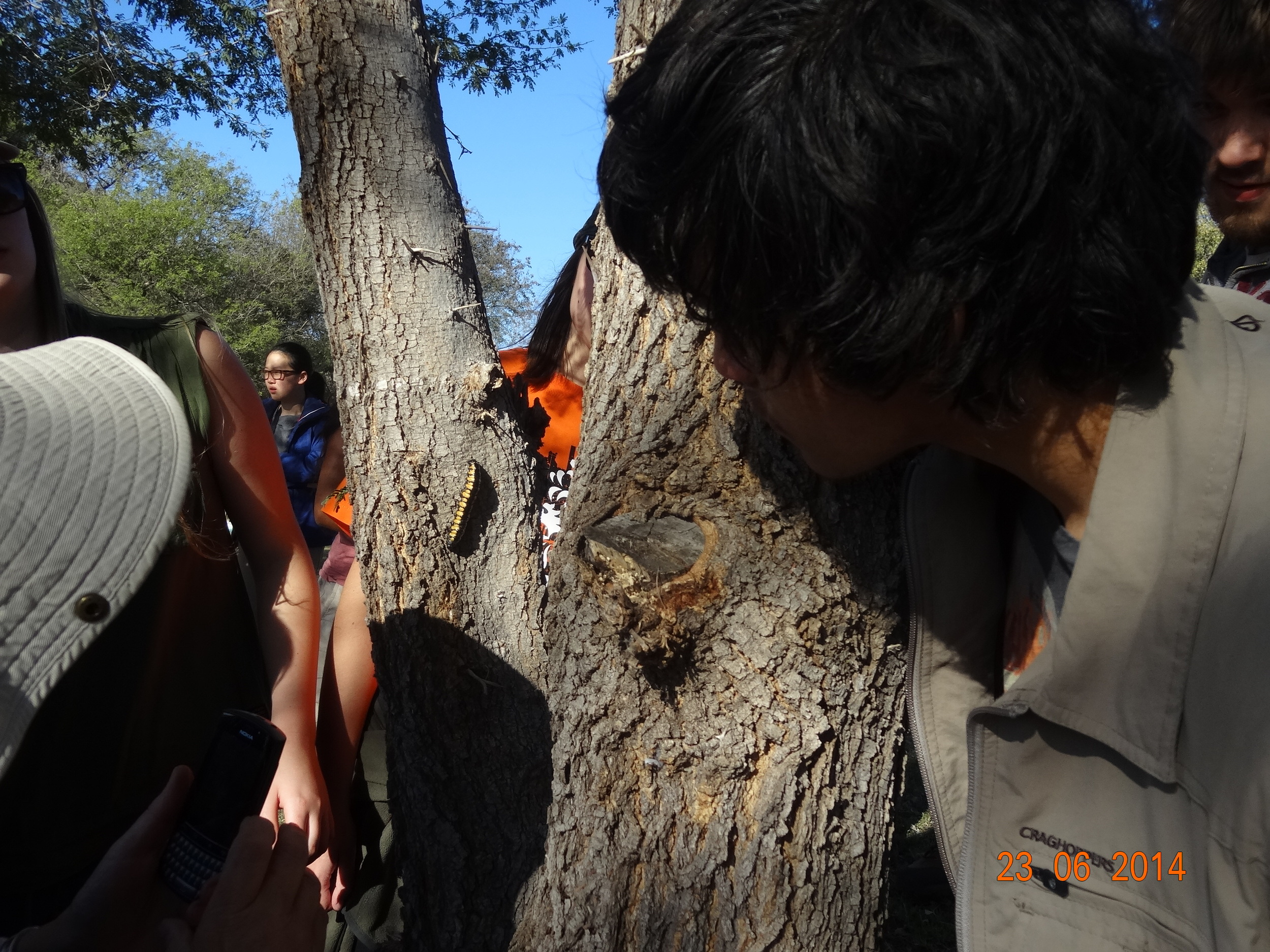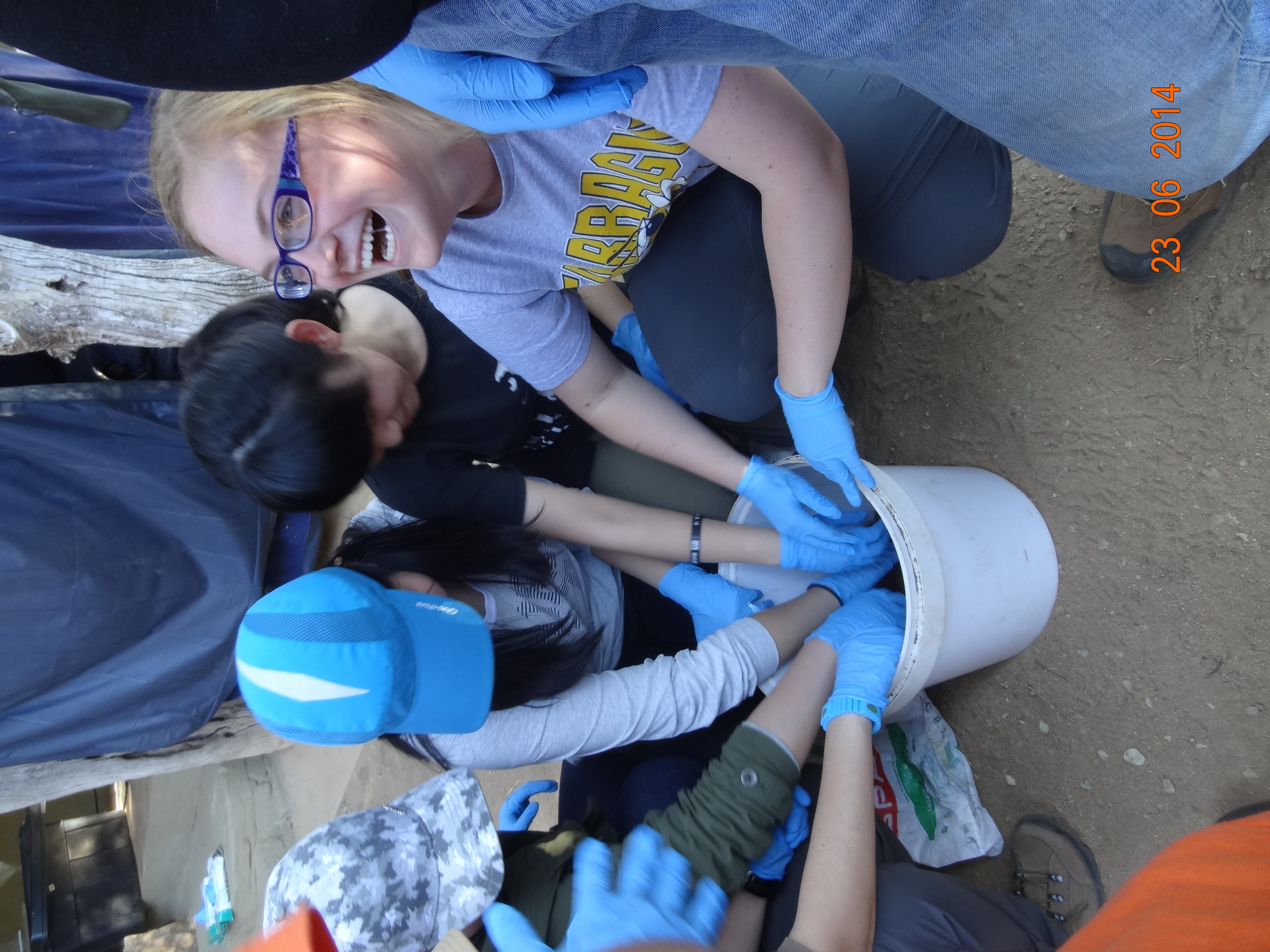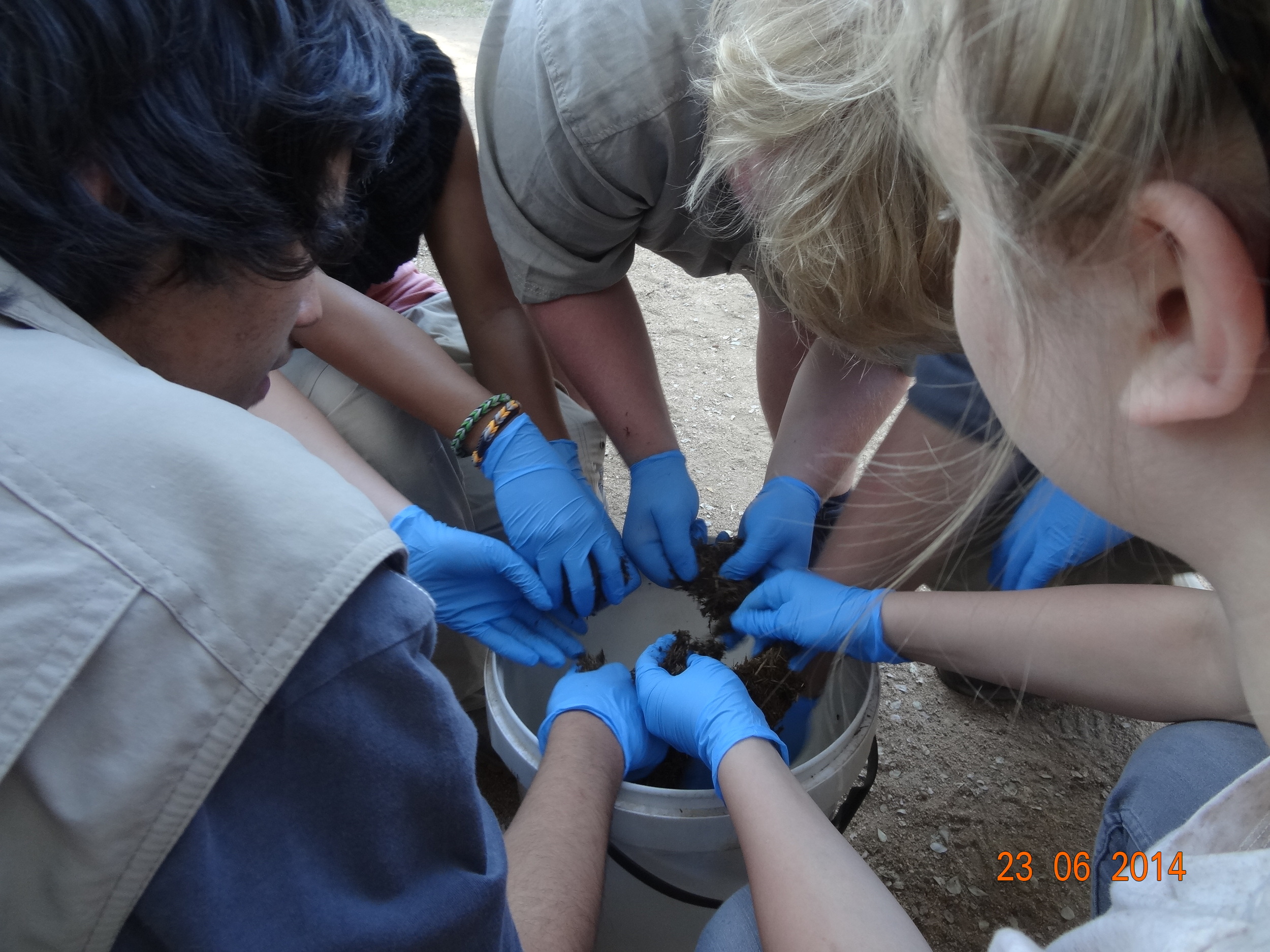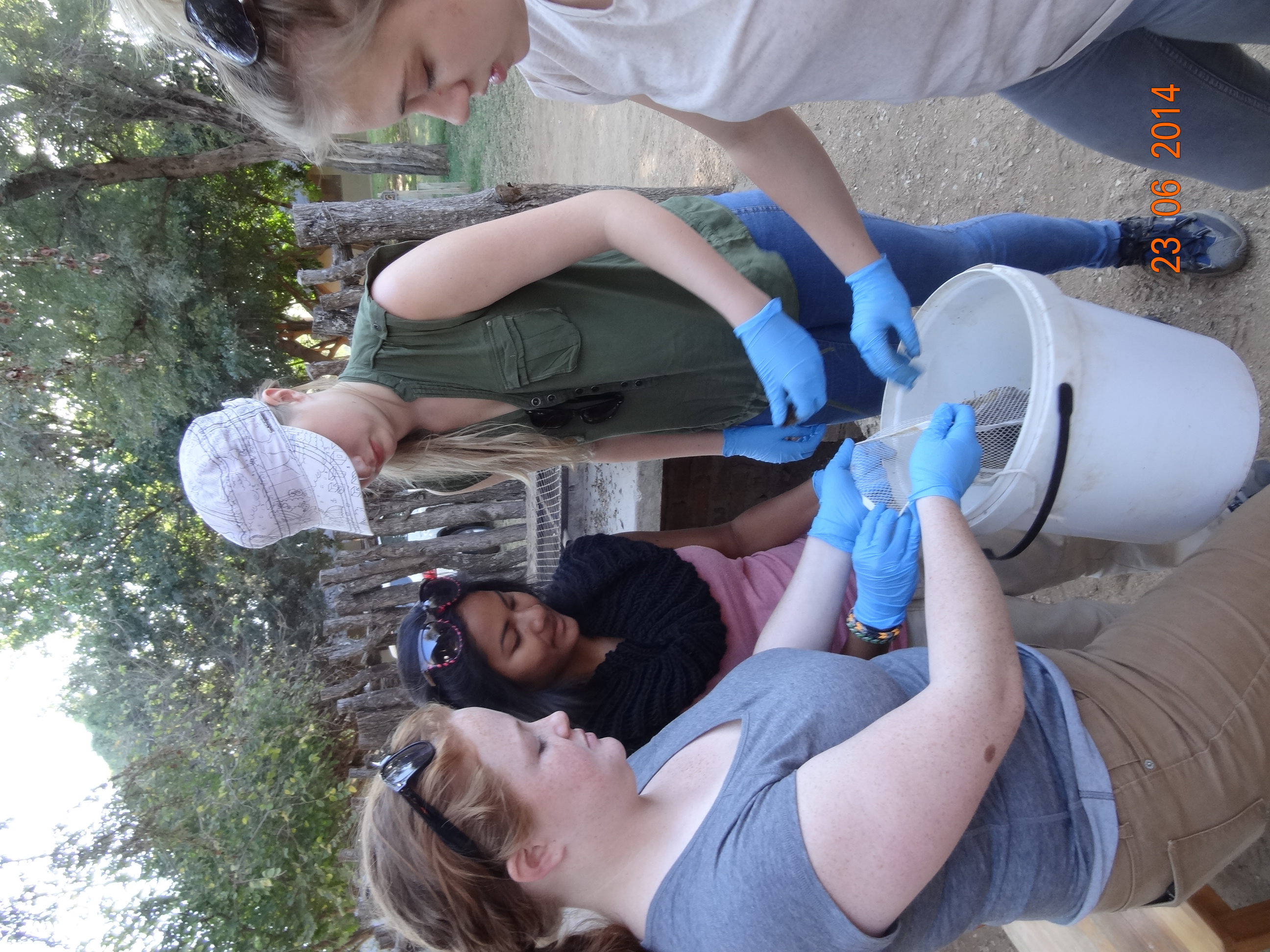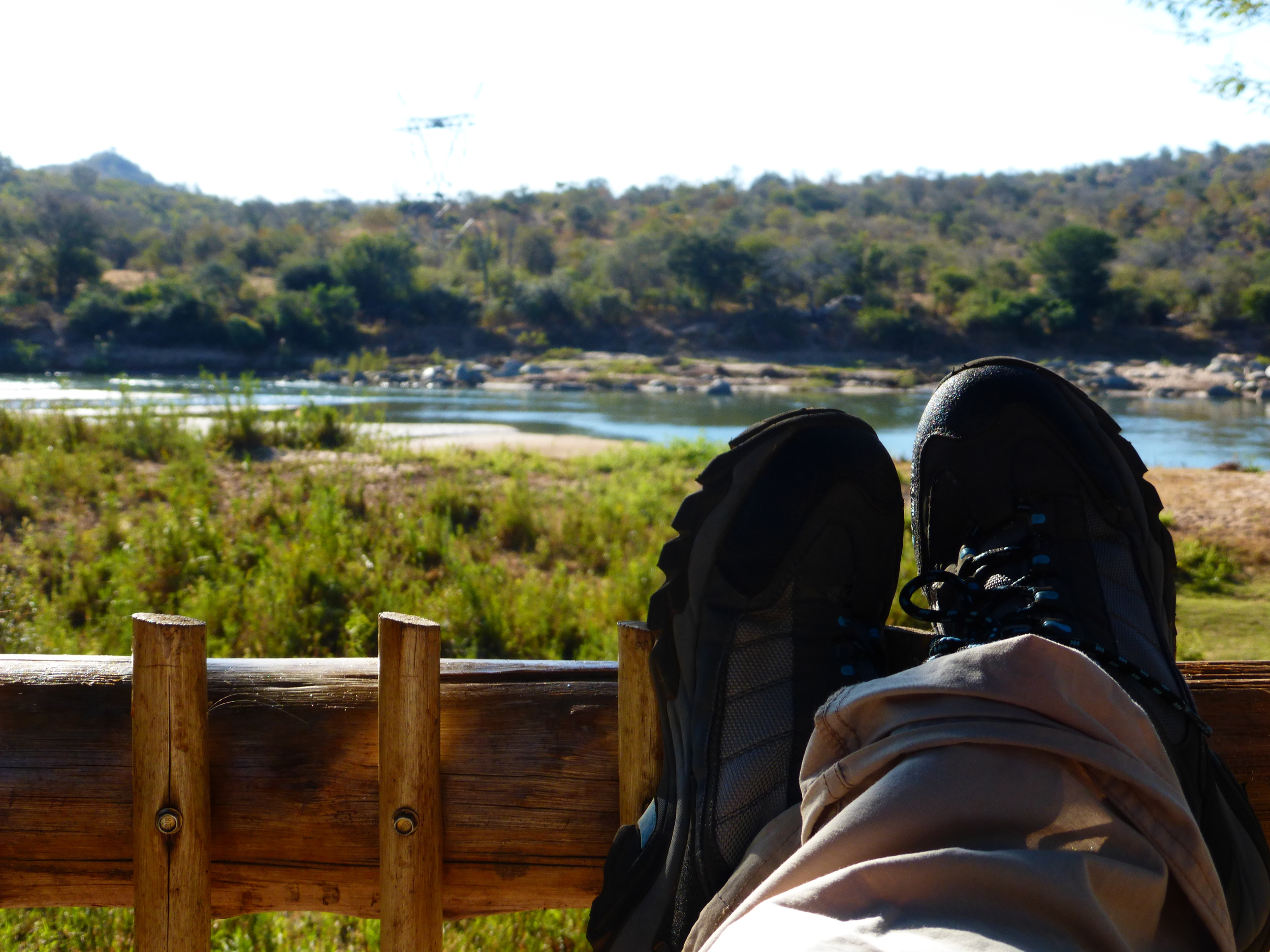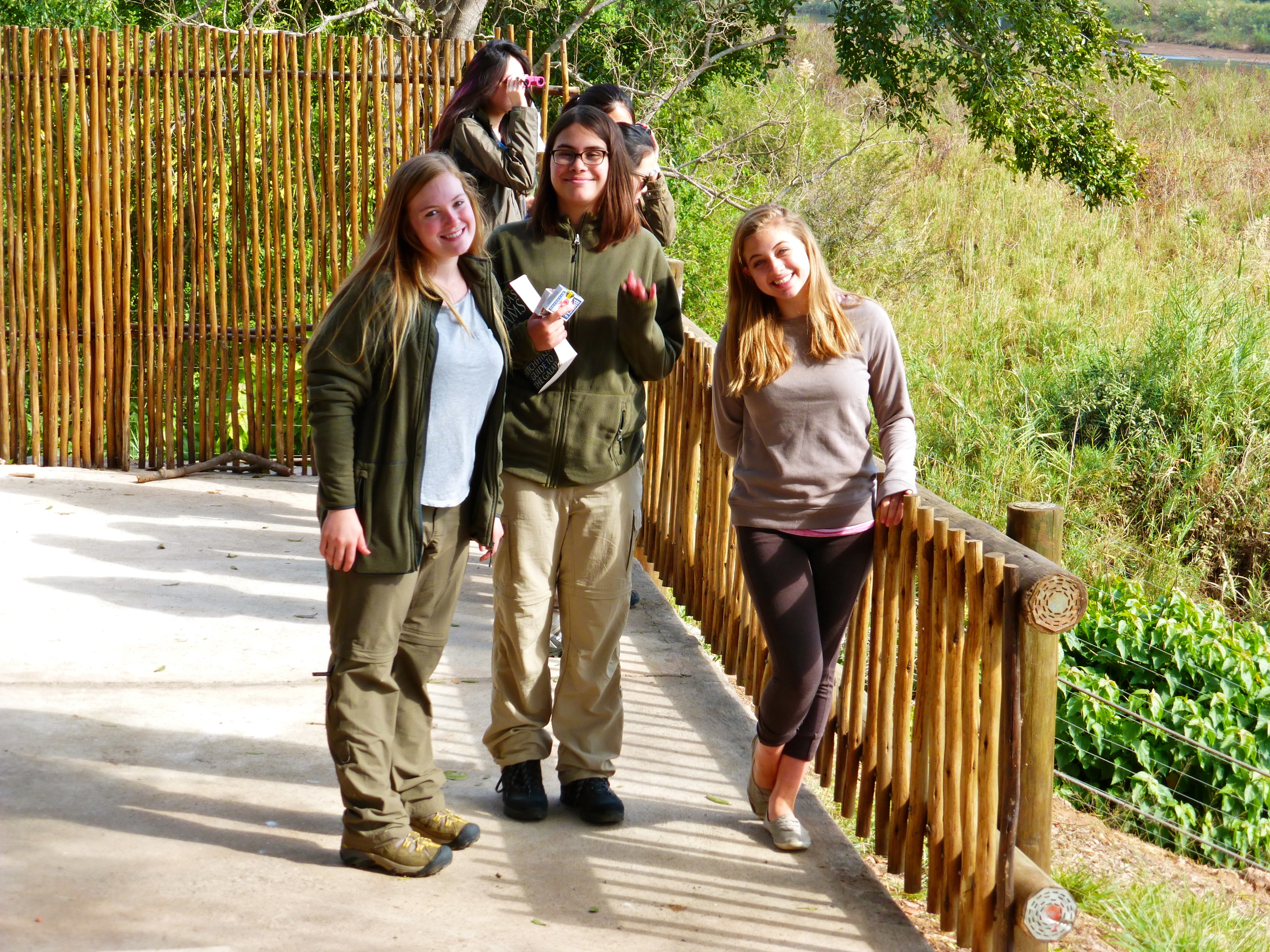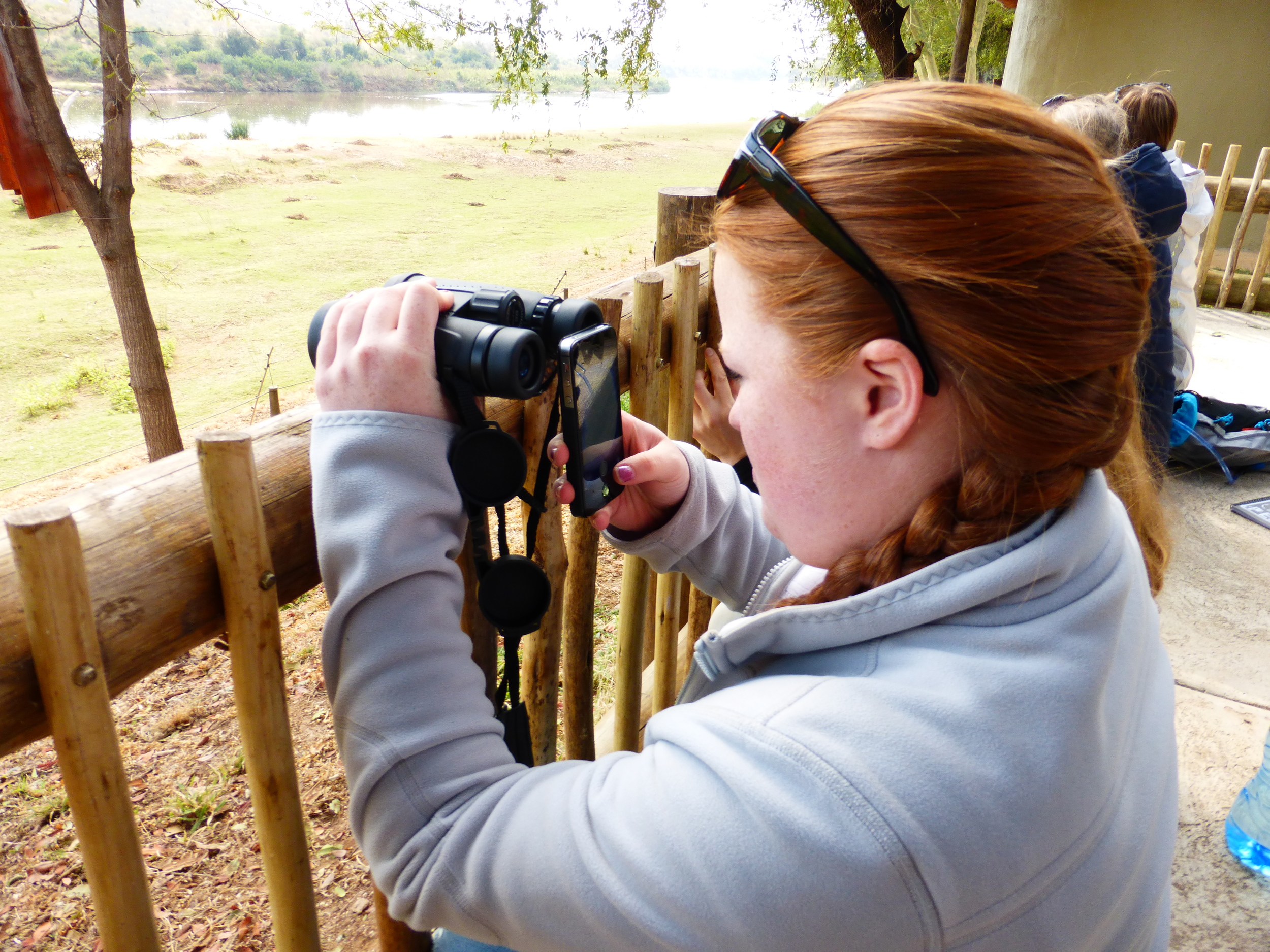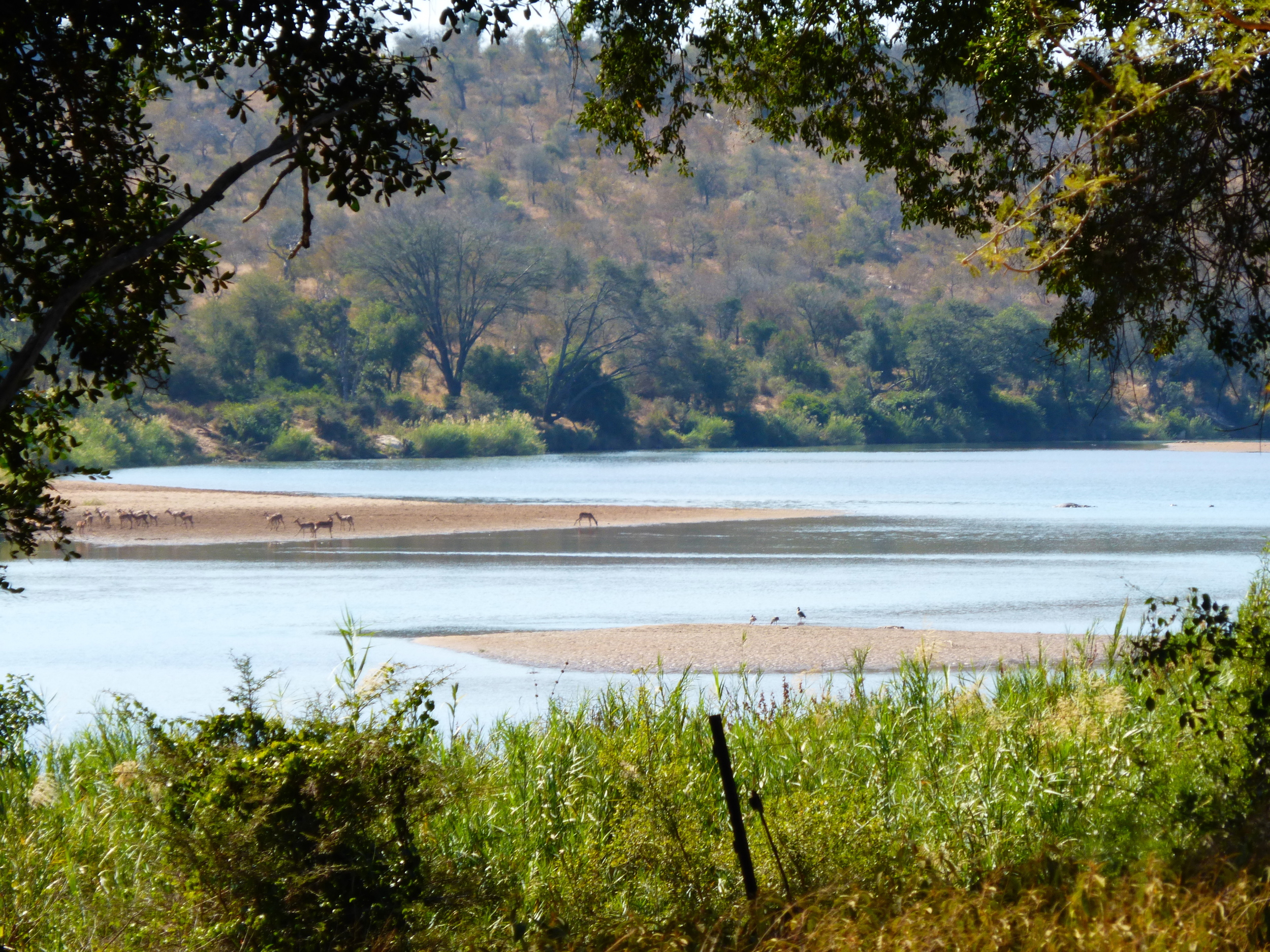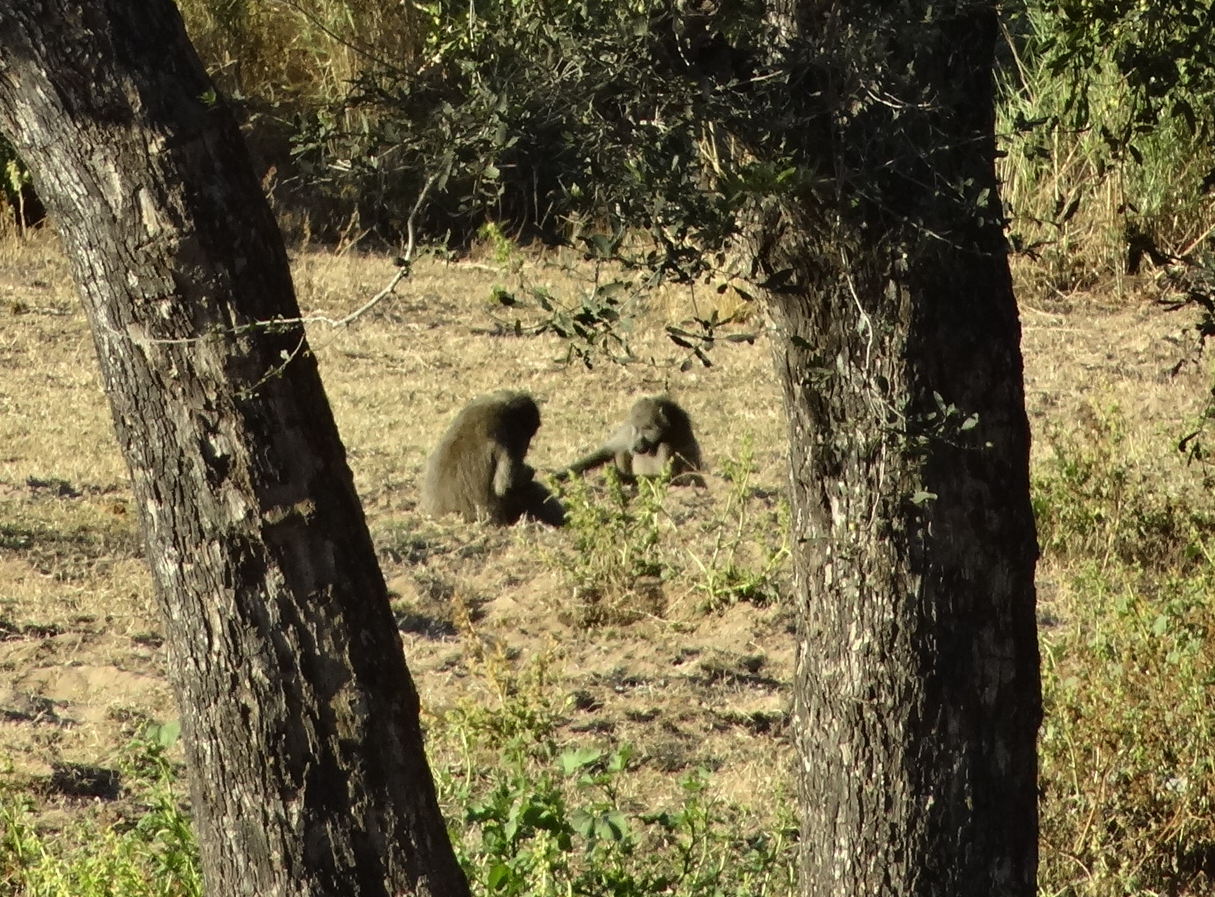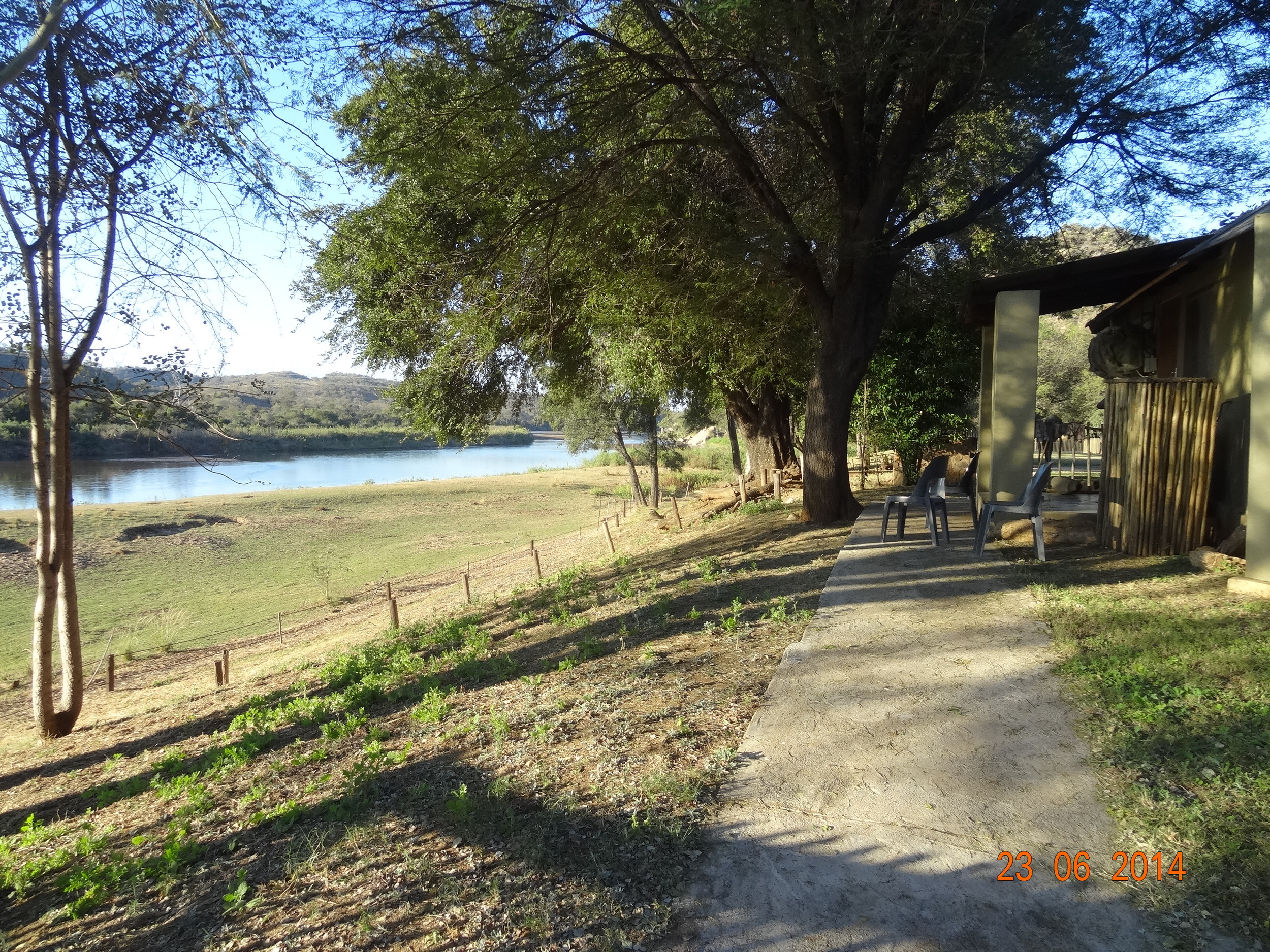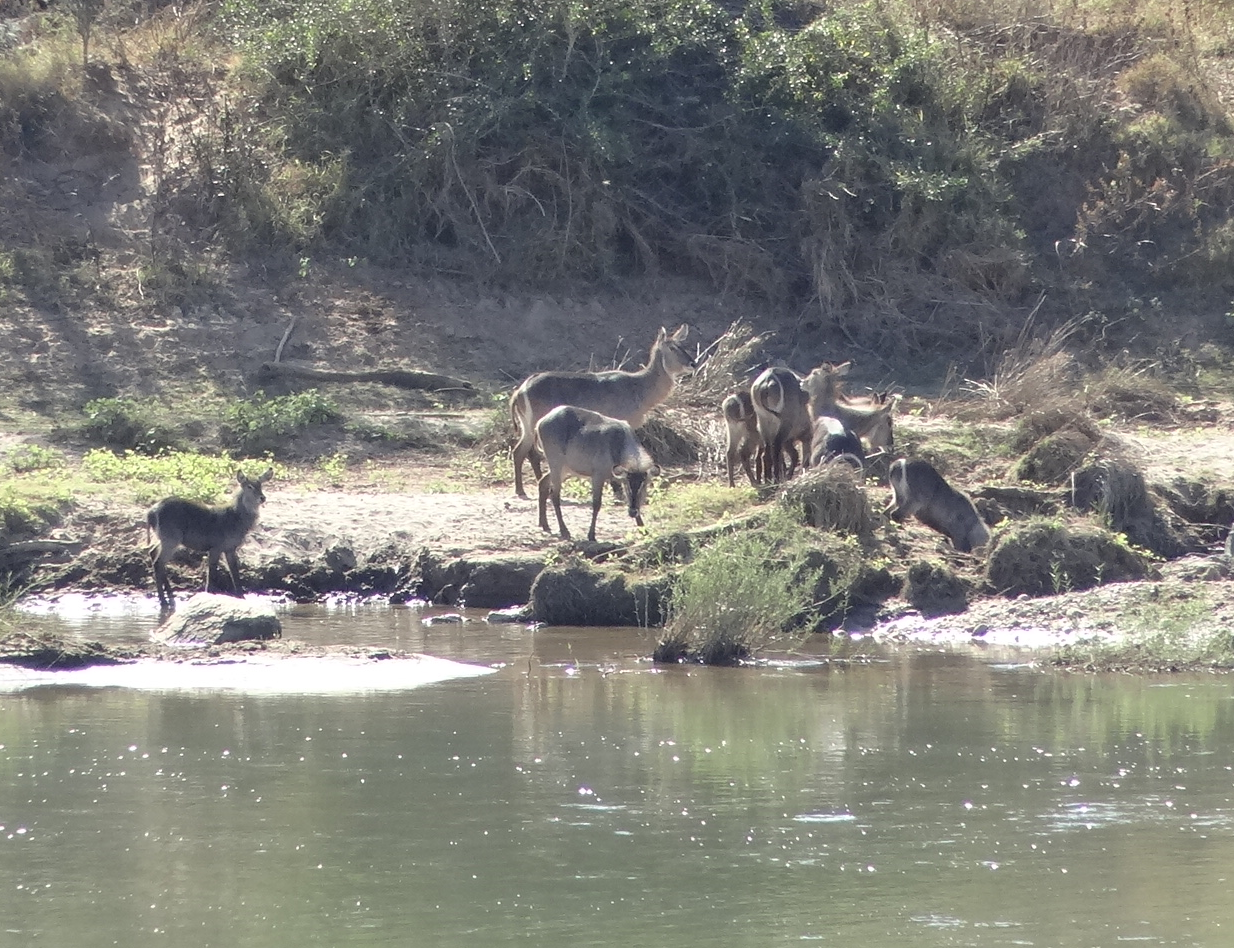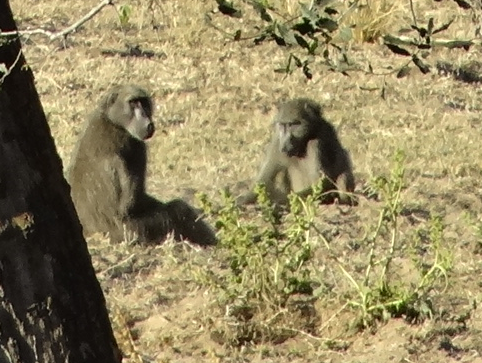We began with a bushwalk with our South African guide Warren. He is a soft-spoken man with a ginger beard and ginger curls looping from under his safari hat. He carries his weapon with ease though you know if he were on his own he wouldn’t take it. He walks carefully and stealthily, listening and observing with expertise far beyond ours. Gavin, an older grey haired gentleman accompanies us but has deferred to Warren as the lead guide on this hike.
There is something comforting and amazing about walking with people who are so self-assured in the bush. They "read" the ground and the bushes inferring who's passed through recently. Their ability to spot and identify tracks is unmatchable. Animals camouflaged in the bush and standing hundreds of meters from us do not escape their scrutinizing eyes.
Looking at the effect of elephants foraging on this mimosa tree as well as about the tree's medicinal activity.
We walk in single file. Silence. Only the crunching of dry grass and branches beneath our feet. The morning South African sun is just appearing overhead and hasn't yet dispelled its power upon us. Warren stops and outlines some tracks in the road for us: a honey badger. A feisty, aggressive, incredible animal he comments. In fact, he’s seen a honey badger chase off lions! Clearly, he could go on all day about this unusual king of the savanna woodland. However, he smiles and questions, "Shall we continue?" We veer up the hillside and Warren pauses to share with us deliciously smelling herbal plants. One of them has a peachy basil scent while the other is similar to aniseed. Instruction on the antihistamine action of the South African Mimosa tree is delivered. Warren's observed an elephant take the bark and rather than eat it, stamp on it and suck it up through its nose! He also had a terrible wasp sting in the bush once and went to the tree, cutting out a bit of the cambium, adding some spit and rubbing it on the growing blister. He said it immediately relieved him of any pain and itching followed by a reduction of the swelling faster than any cream he'd ever used.
Onward we go. Silently. Single file. Looking. Scanning. Grey monkeys leap around in the trees ahead of us. A multitude of unique birds sing and fly around us. A magnificent Kudu stares at us from across the valley. We pause to appreciate this majestic creature before advancing up the hill. Seeing the recent droppings of a buffalo Warren and Gavin share experiences of their encounters with this creature.
The countryside, as yet, remains untouched by man and looks pretty much like it did thousands of years ago. Stunning and beautiful it expands out beyond what we can see. At the top of the hill we shed ourselves of our jackets as the sun begins to heat us up. We speak in hushed voices. Truly, we are in awe. Then, once again in single file, we are led by our armed and knowledgeable guards back to camp.
After lunch an insect lecture and practical is presented to the students. It's not as organized as the others but the practical side of trapping interests the students. They eagerly shove their gloved hands into the centers of elephant, hippo, and rhino dung, preparing traps for dung beetles. They check on butterfly traps, ground traps and a malaise trap. They are informed that tomorrow collection, mounting and identification of their specimens will occur.
While sitting quietly during our breaks we continue to observe from our campsite on the Olifants river animals coming to water. Stunning to watch a giraffe fling water into the air as he raised his head. Kudu and waterbuck drink side by side. A warthog is rolling in the sand. Impala lurk furtively at the edge of bush cover. On the sandy beach a crocodile suns. Buffalo, hippo, spur fowl, and baboons pass across the grassland in front of the campsite. The views from the campsite alone are simply sensational. It's shocking how matter-of-fact you can regard hippo, crocodile, and impala on your back doorstep.
The power of quiet observation is consuming my thoughts. Why is it that, earlier in the day, during our morning bush walk, did we have an urge to speak as soon as we began to move? How is it that we are unequipped to simply be silent? How do we instil a value of being still? How do we develop a value of listening? How do we foster the value of observation? How do we establish a value of respect down to each step we take? How does one teach and instil these principles? Such skills would be immediately useful back in life at home and in the classrooms this coming fall. I need to determine how to incorporate such mindfulness into my curriculum.
Any suggestions? Please comment below!
